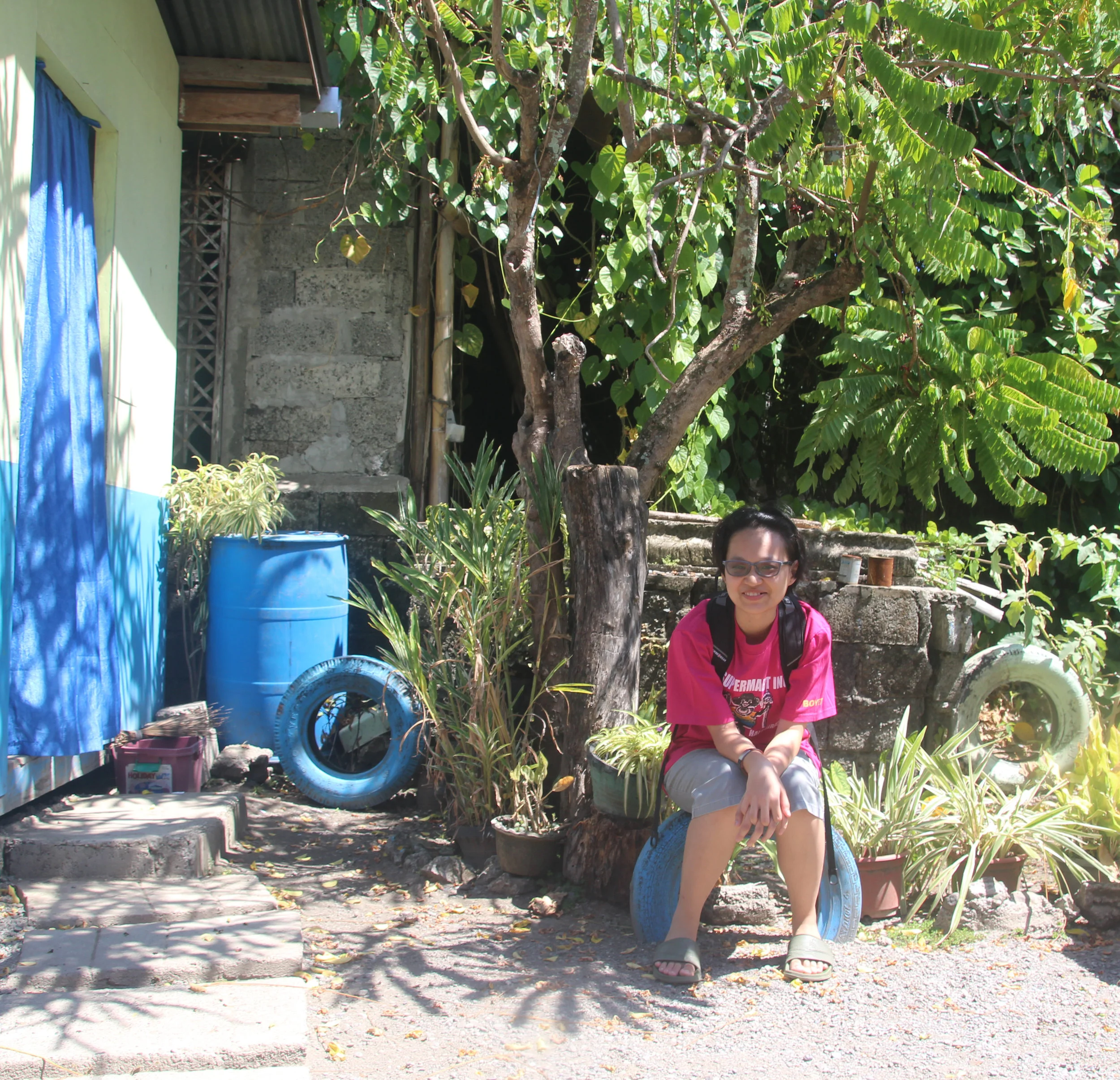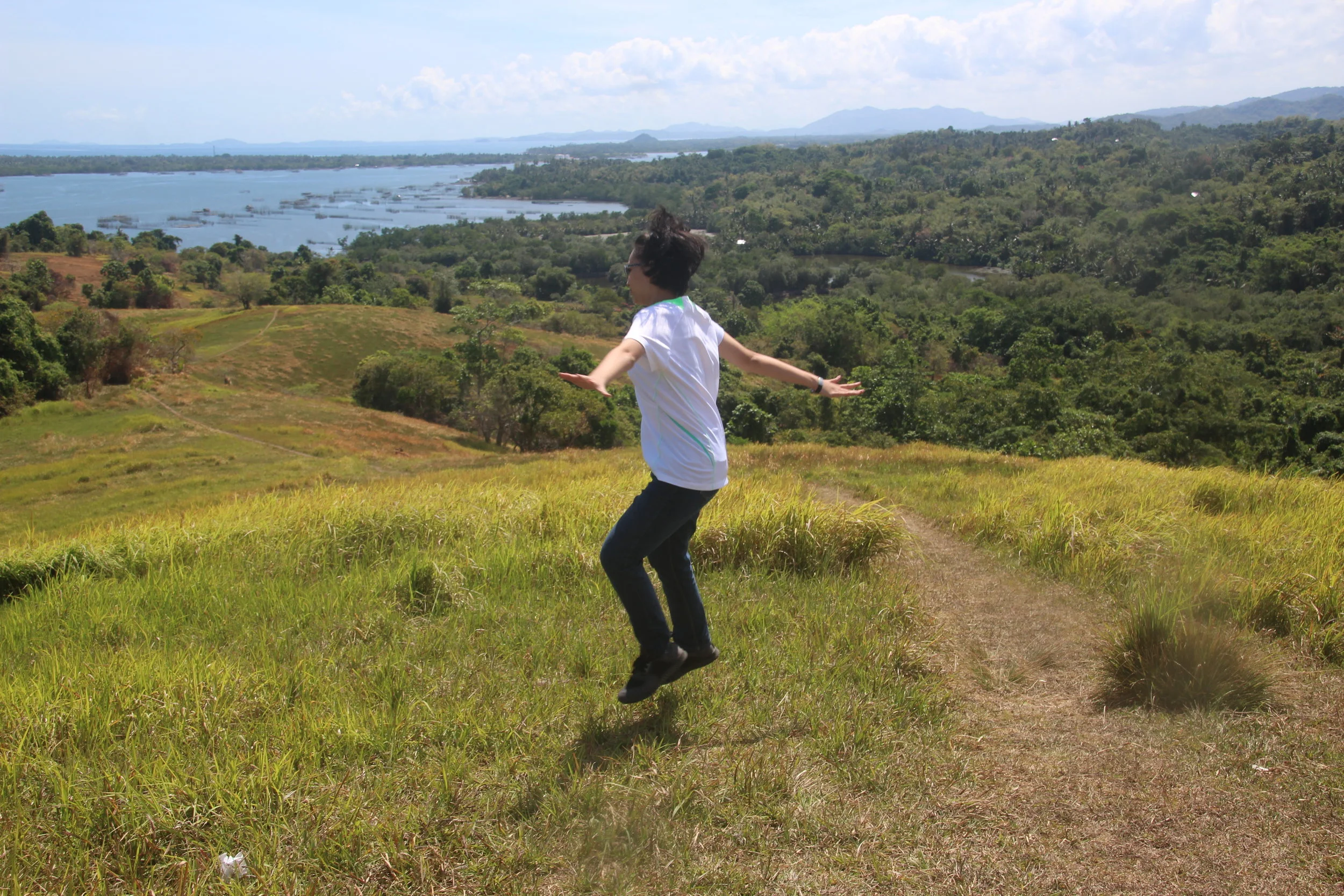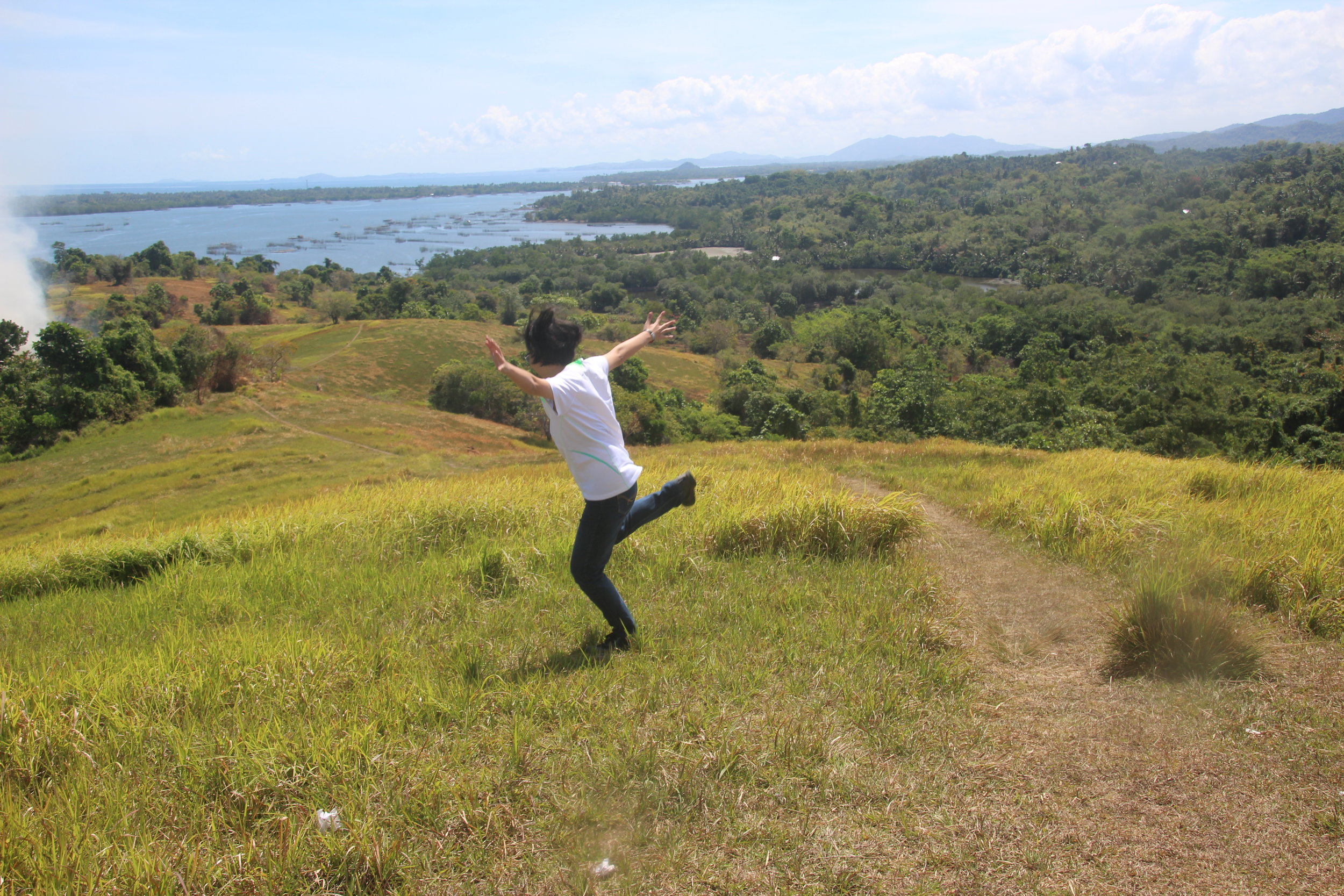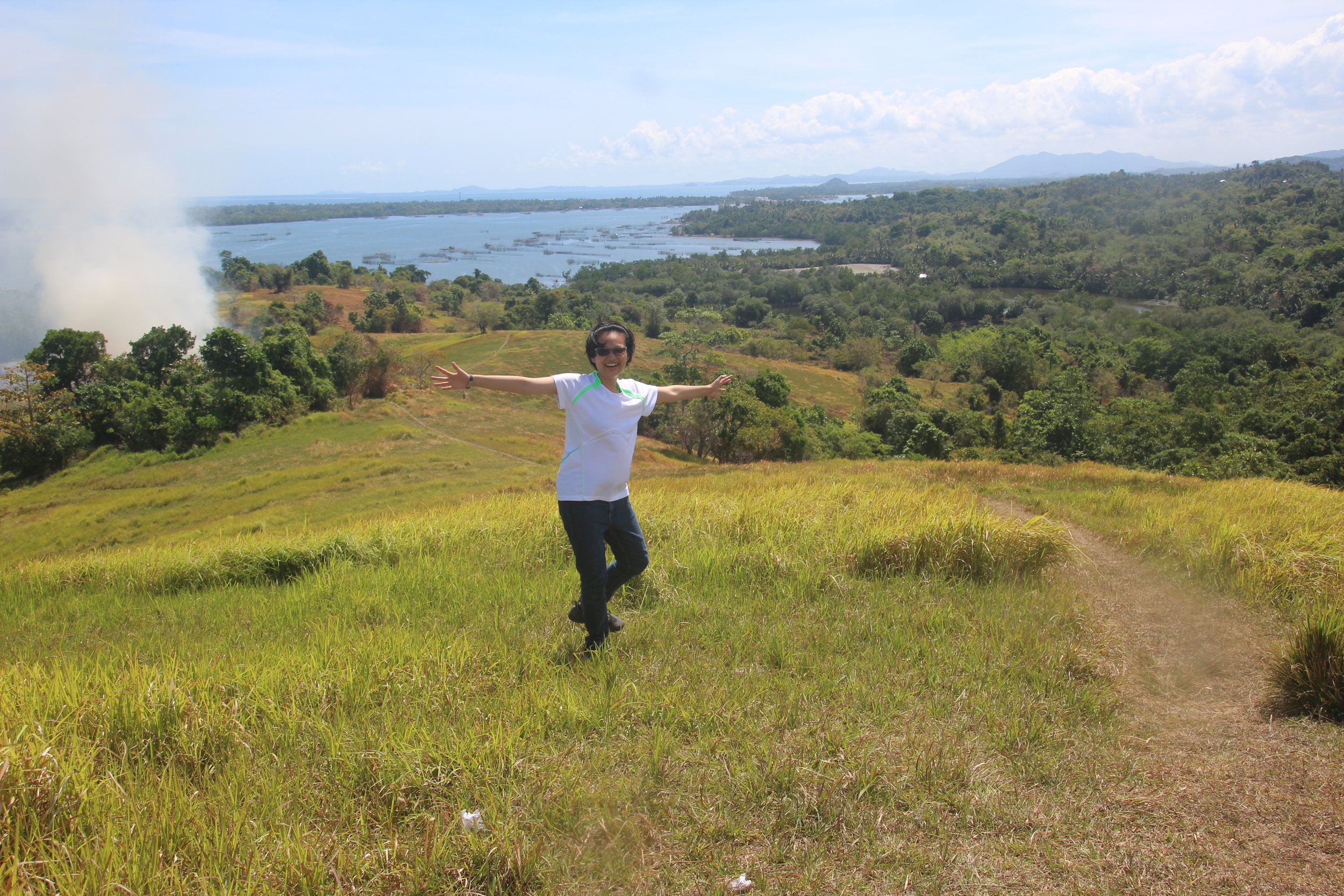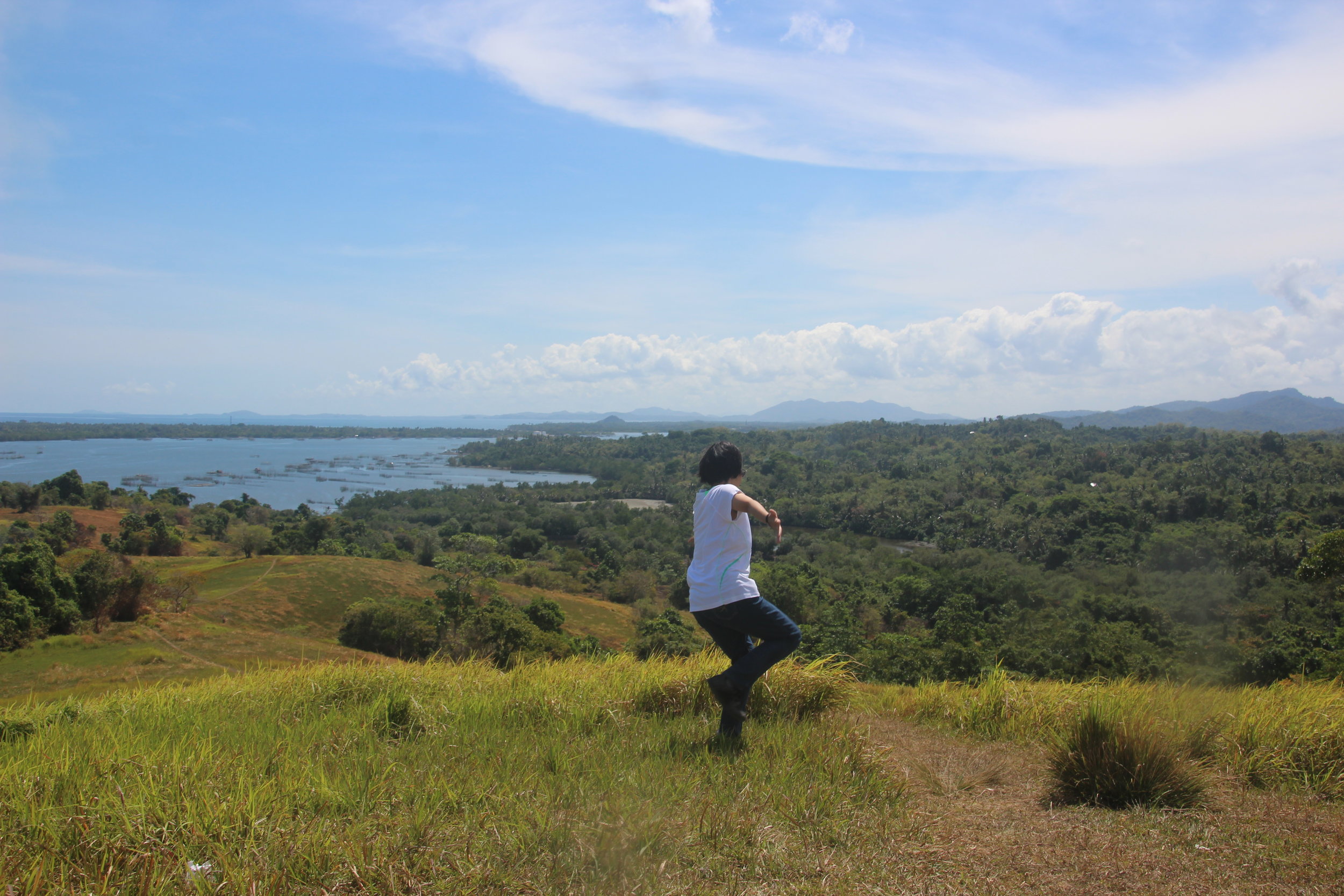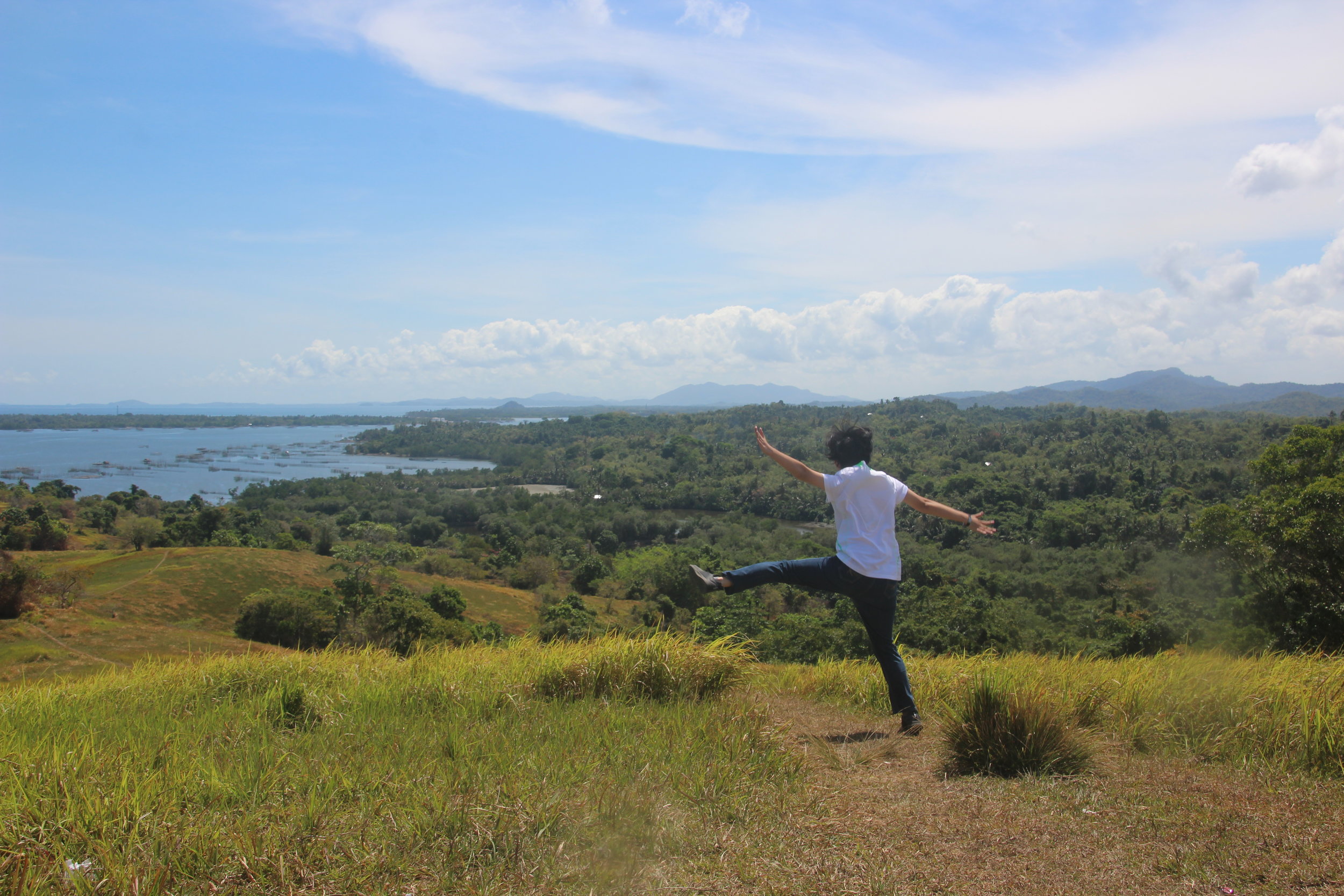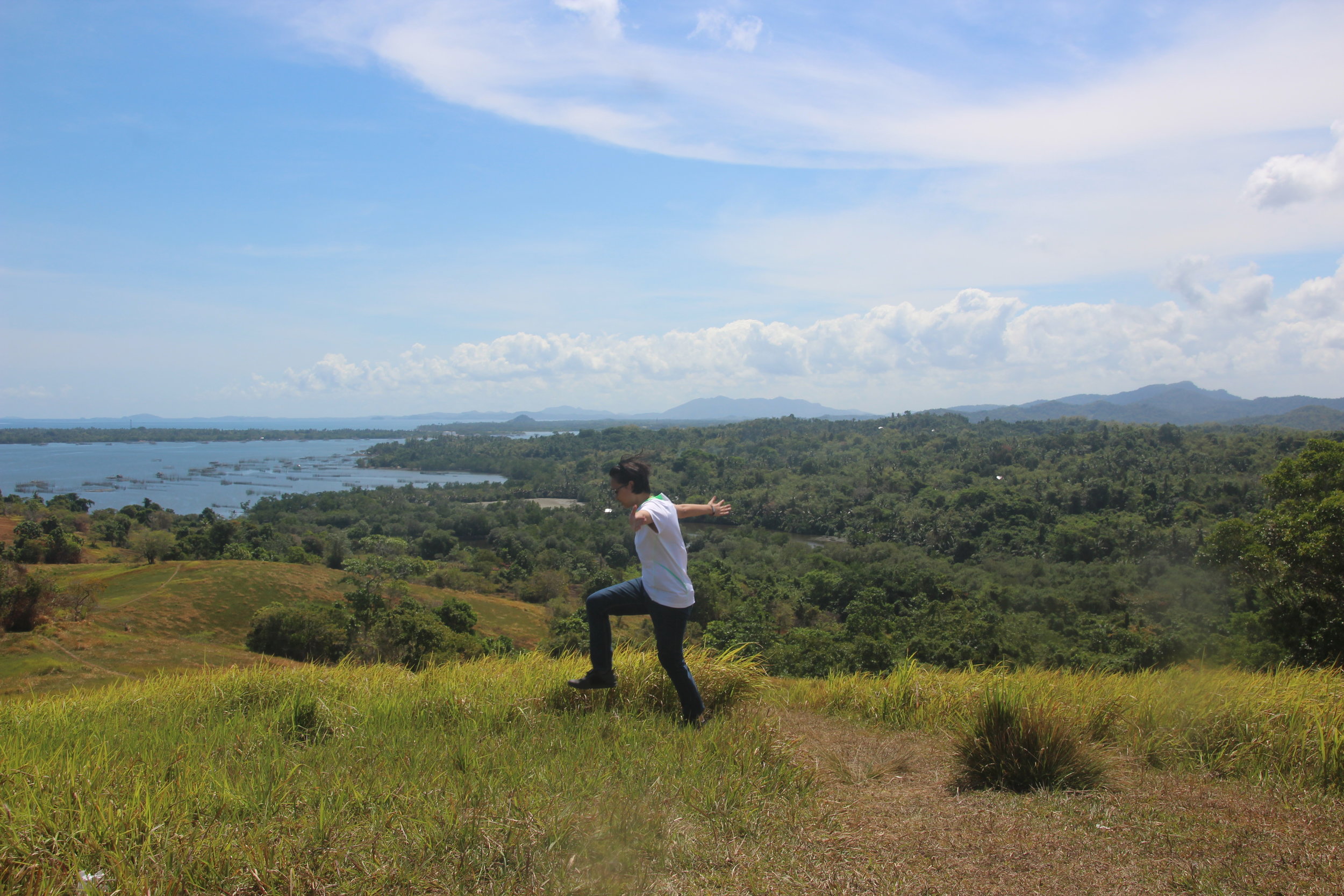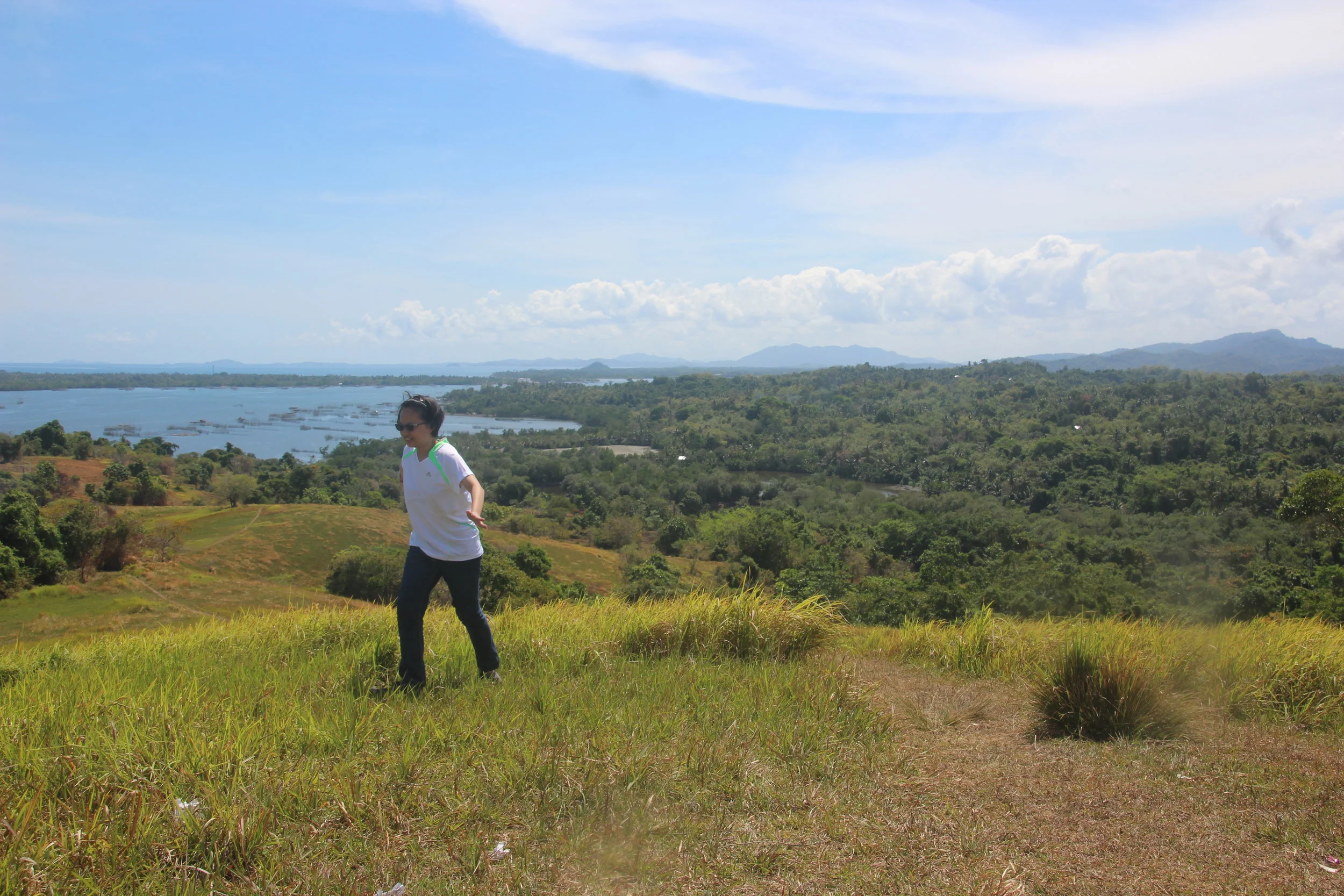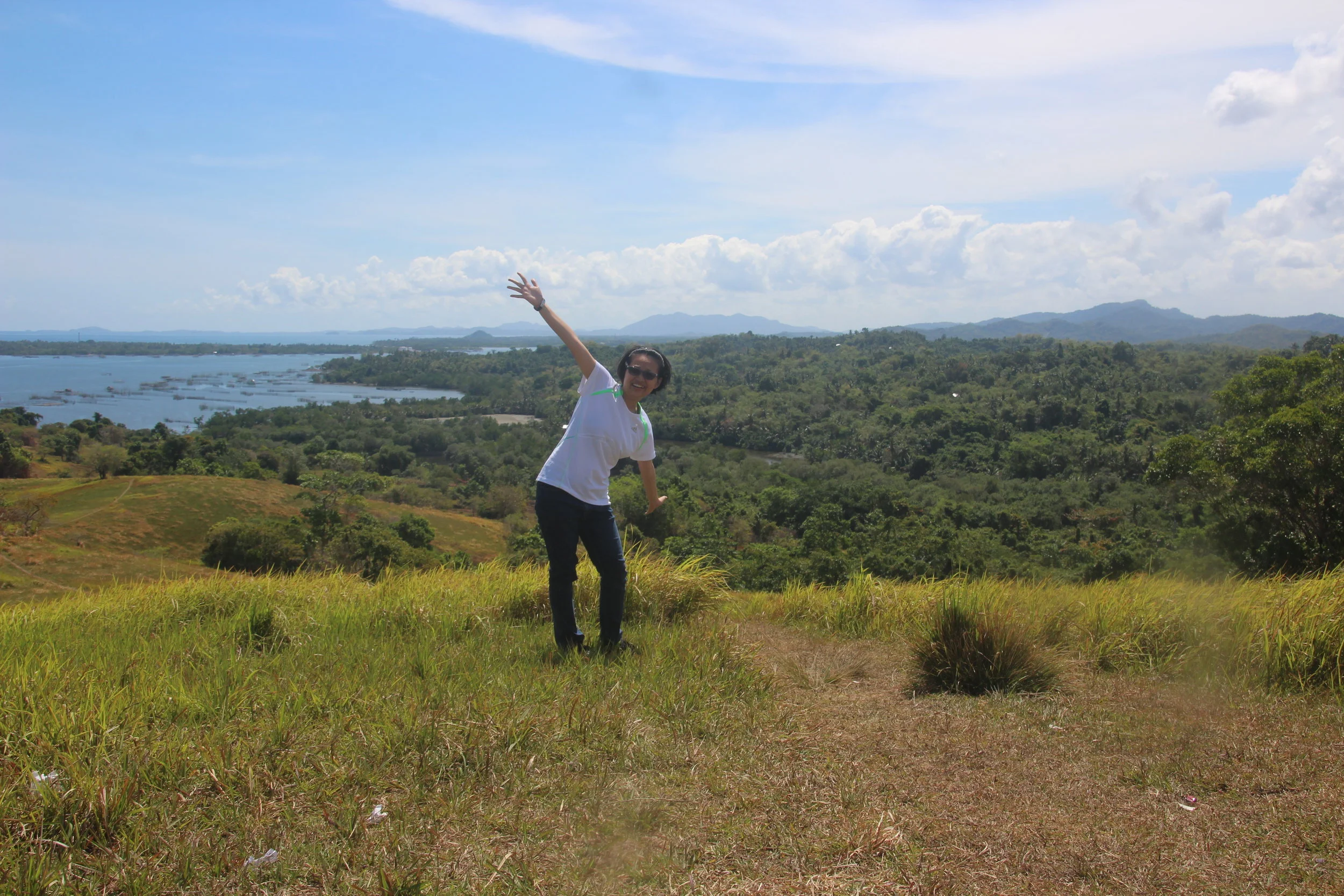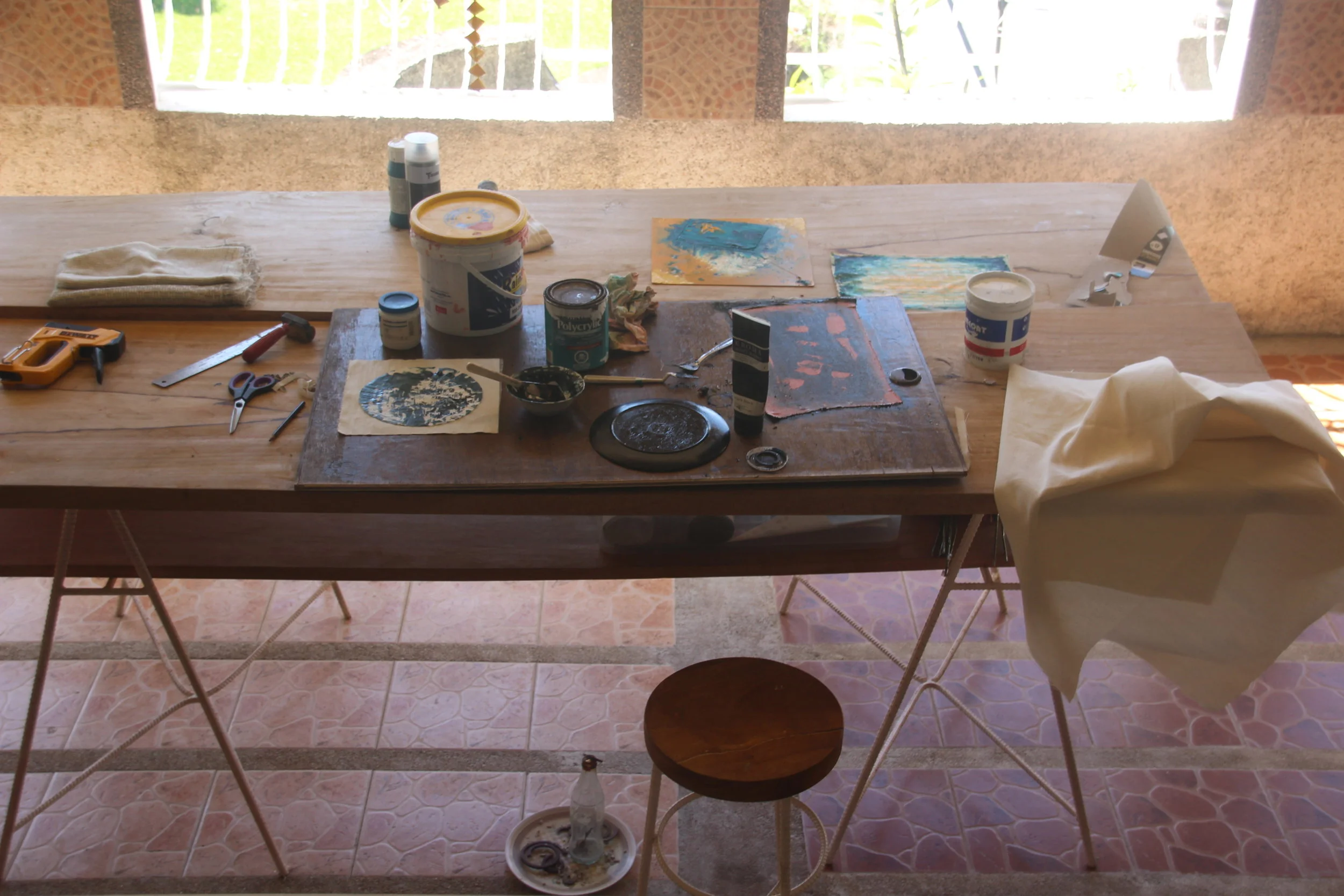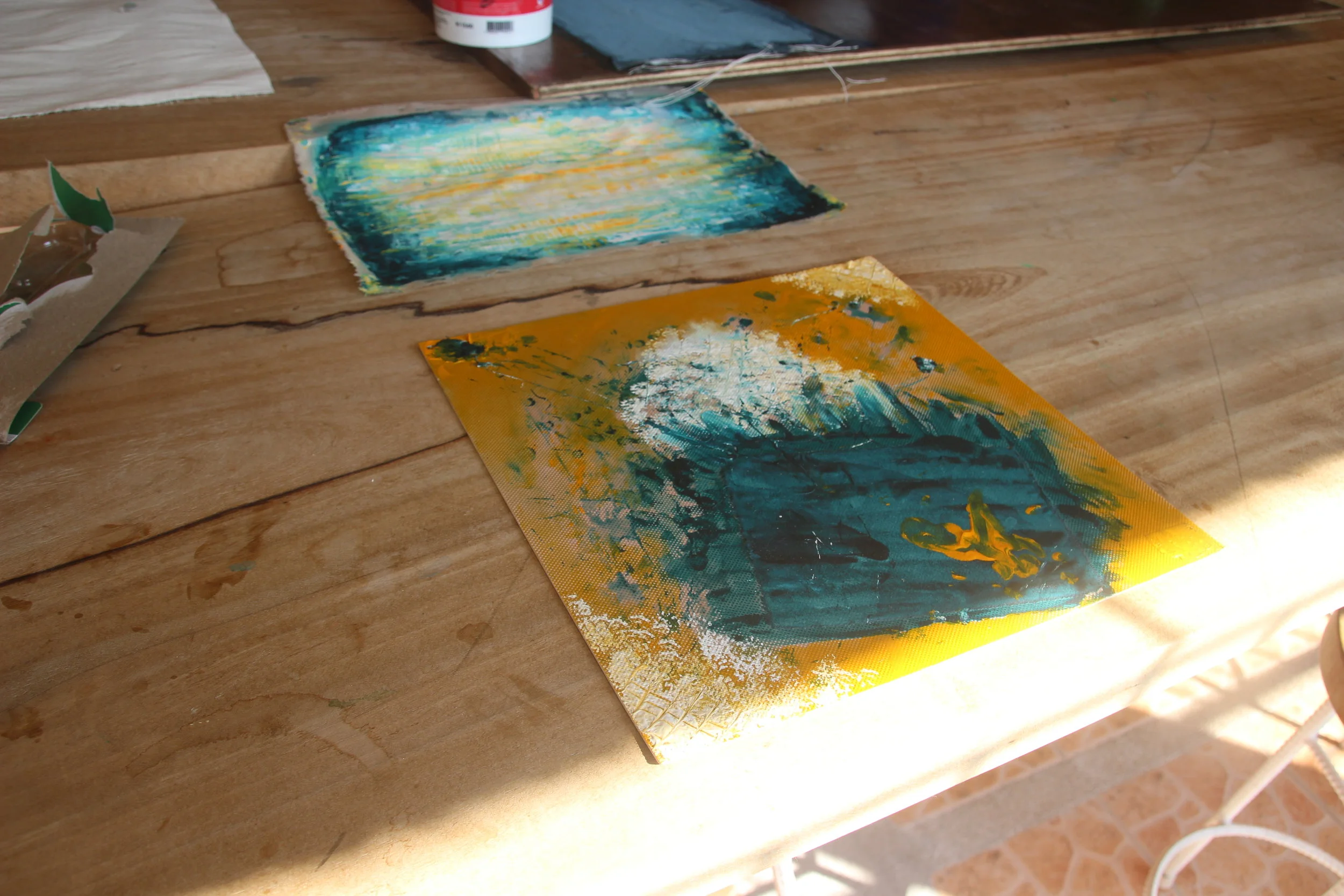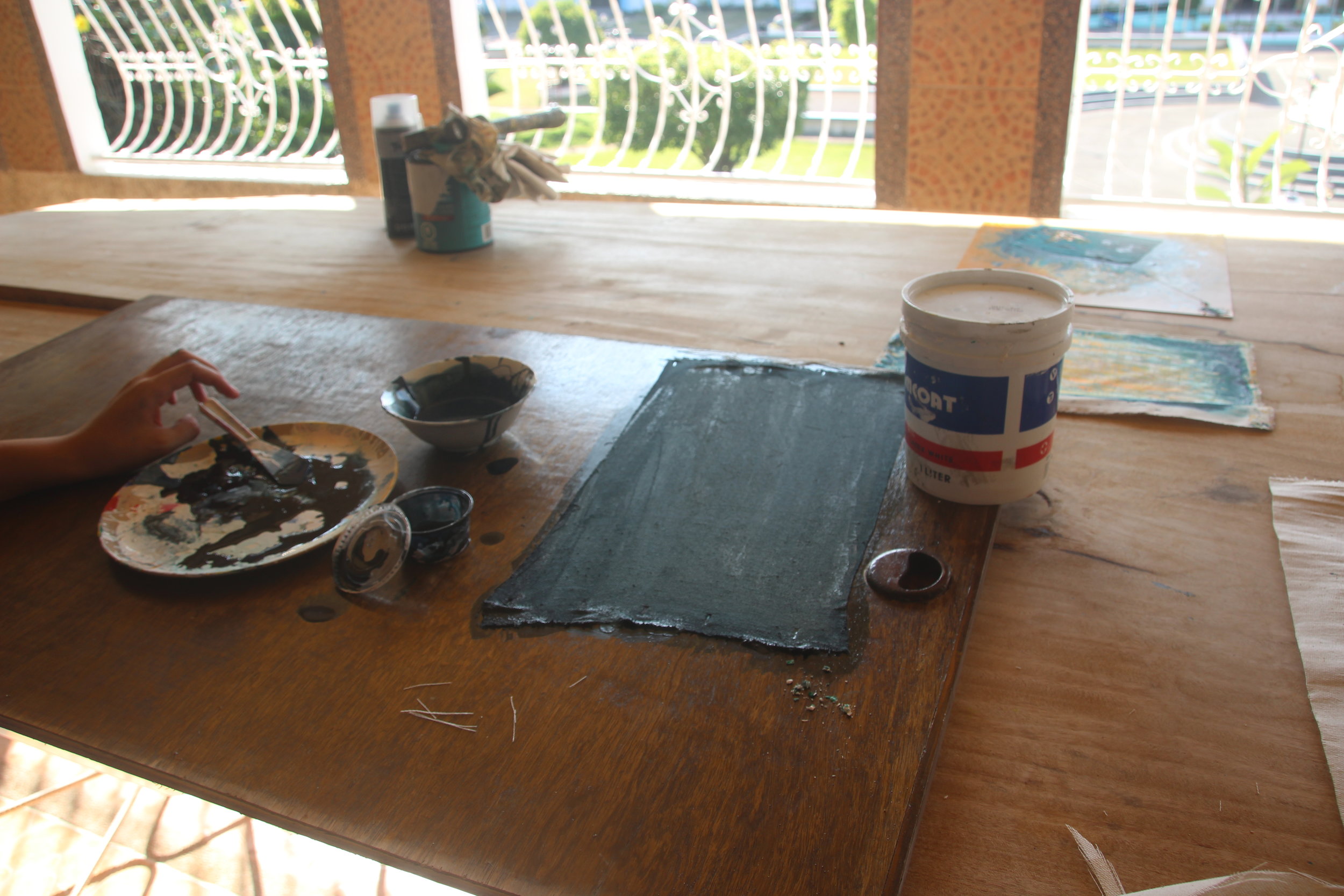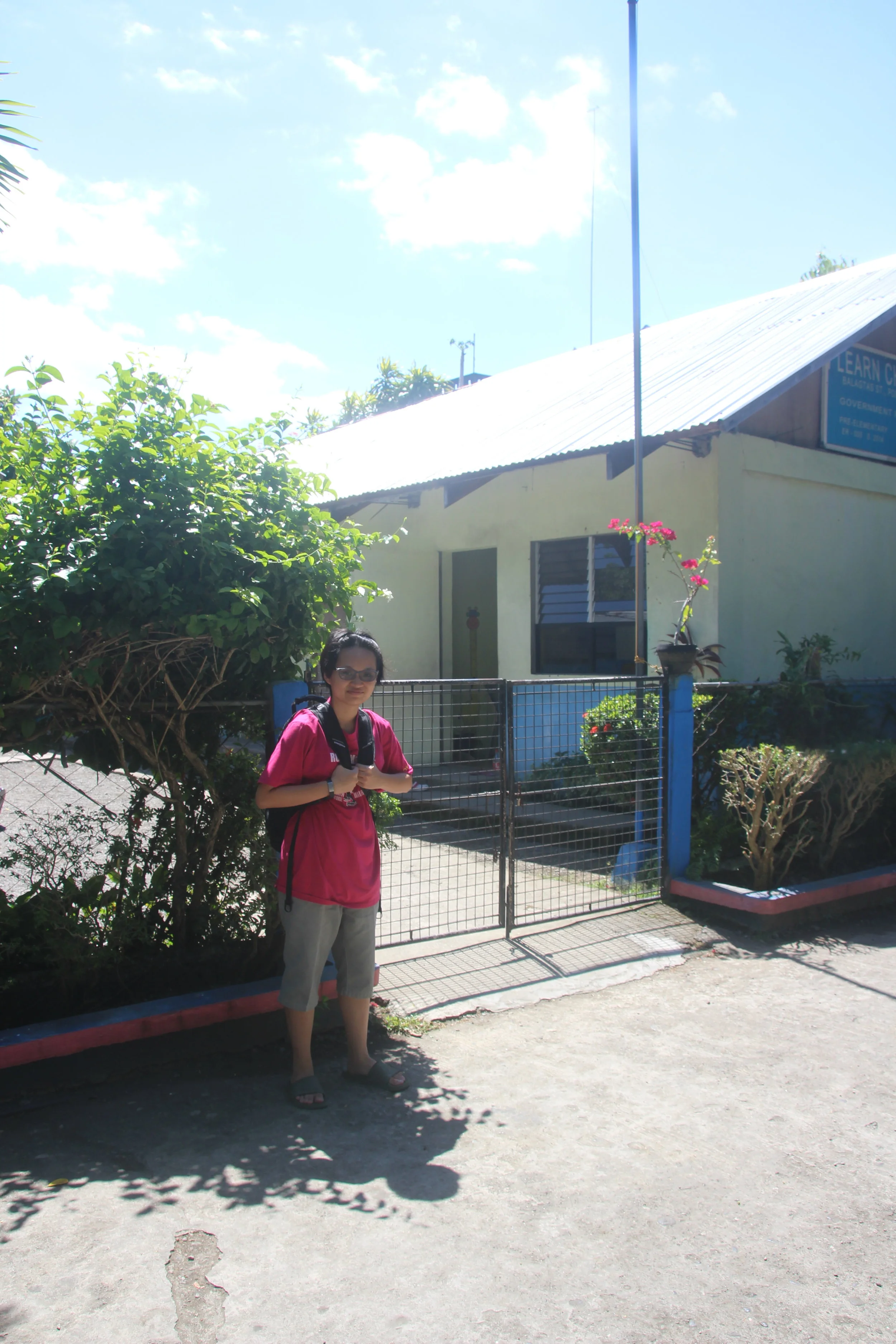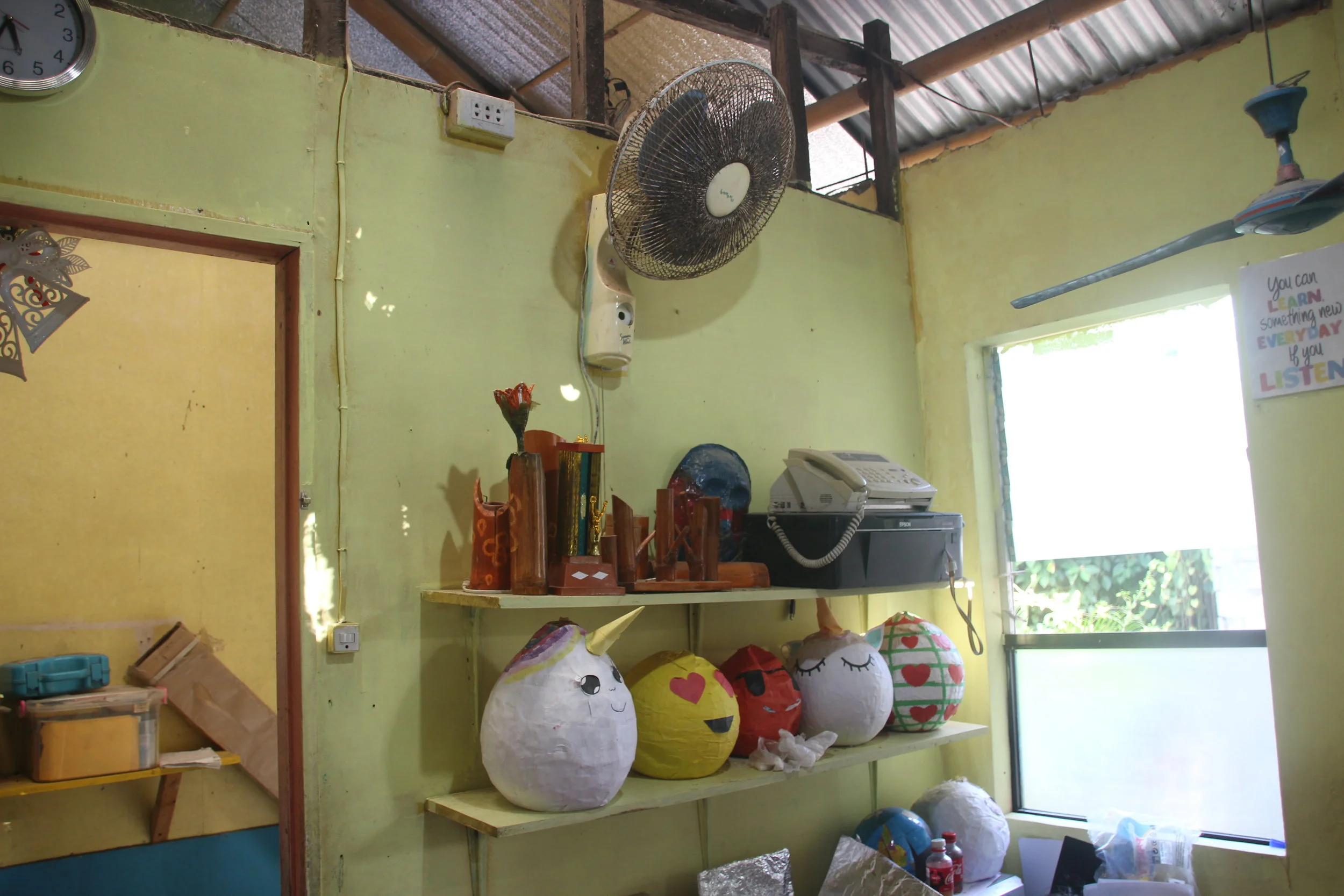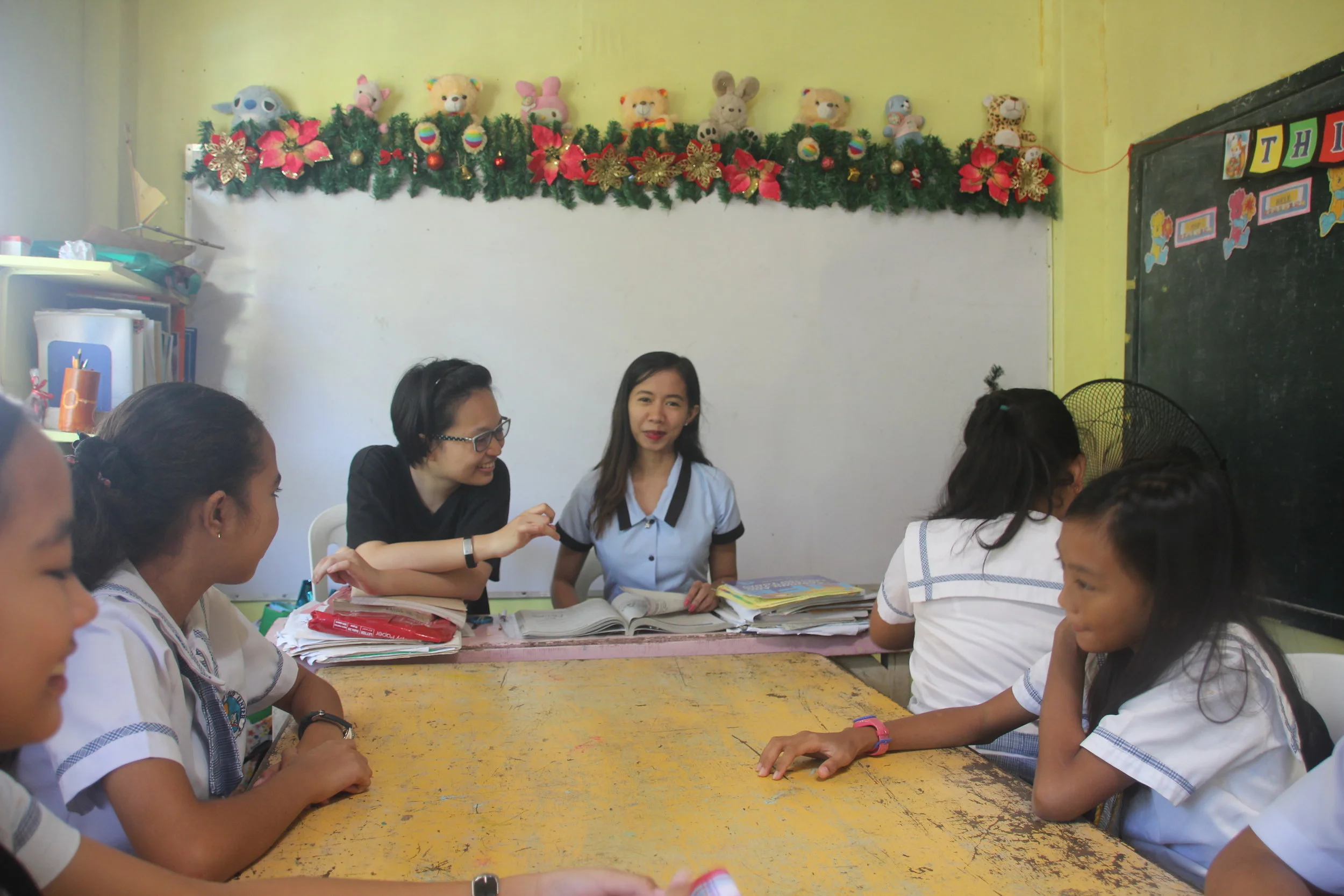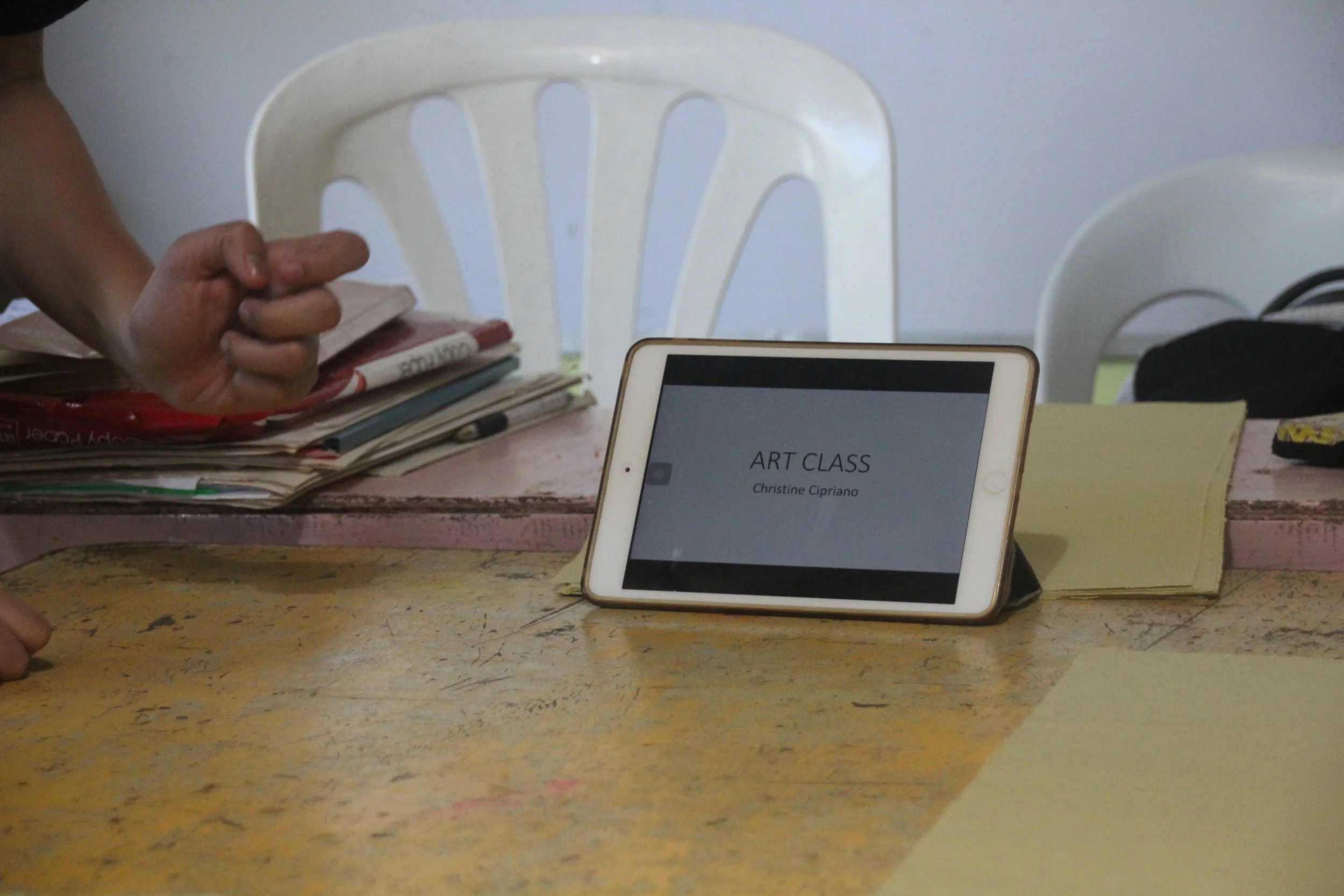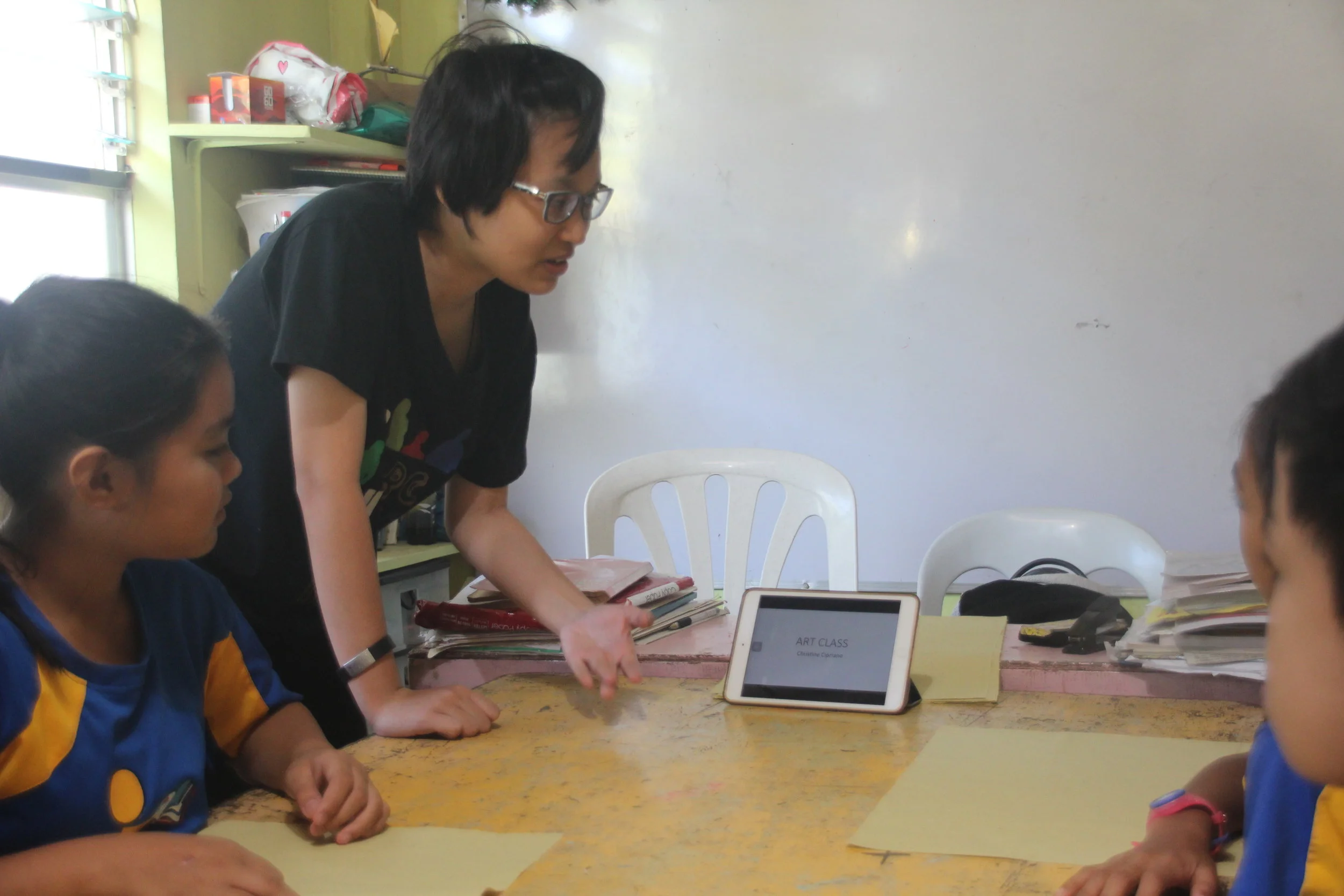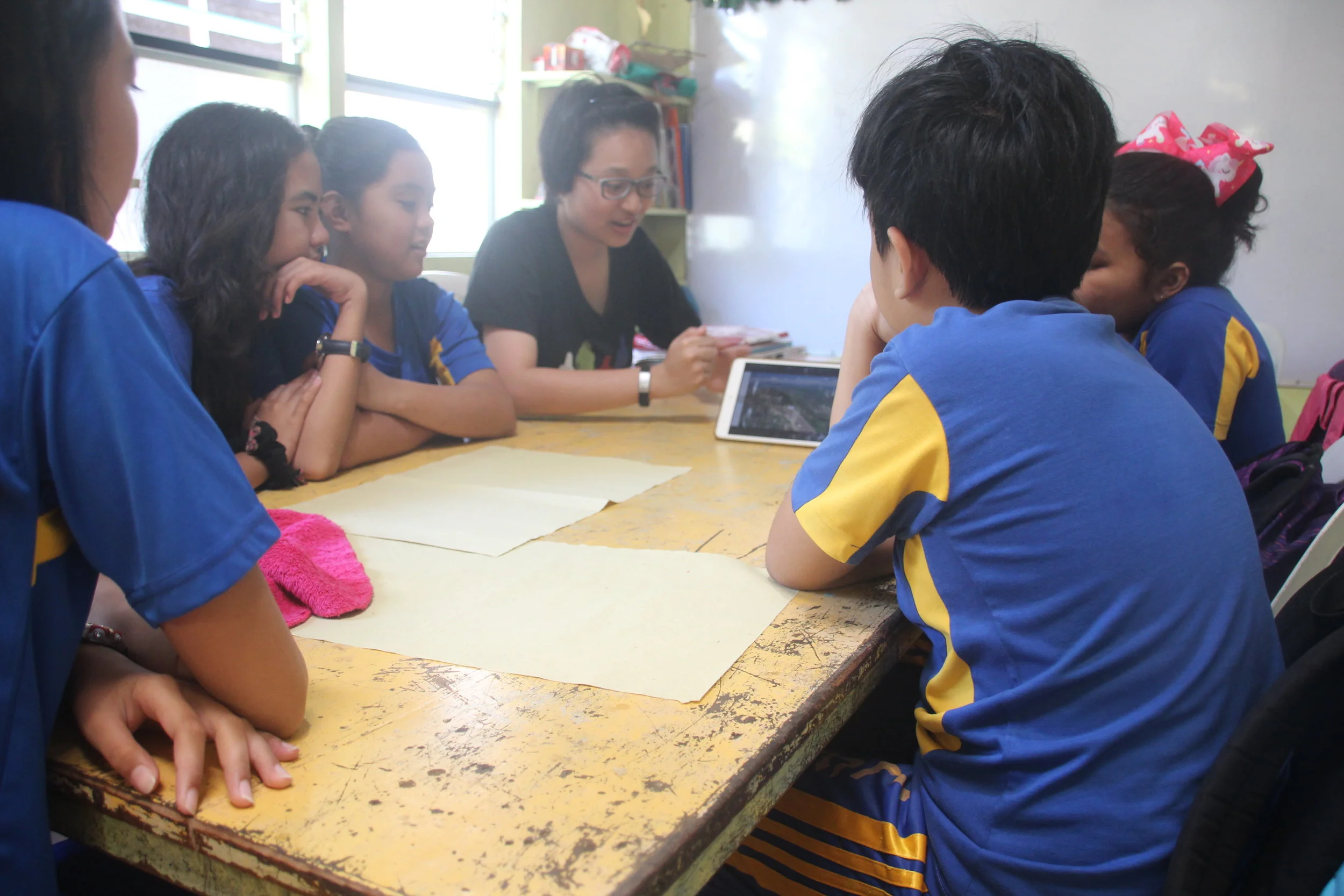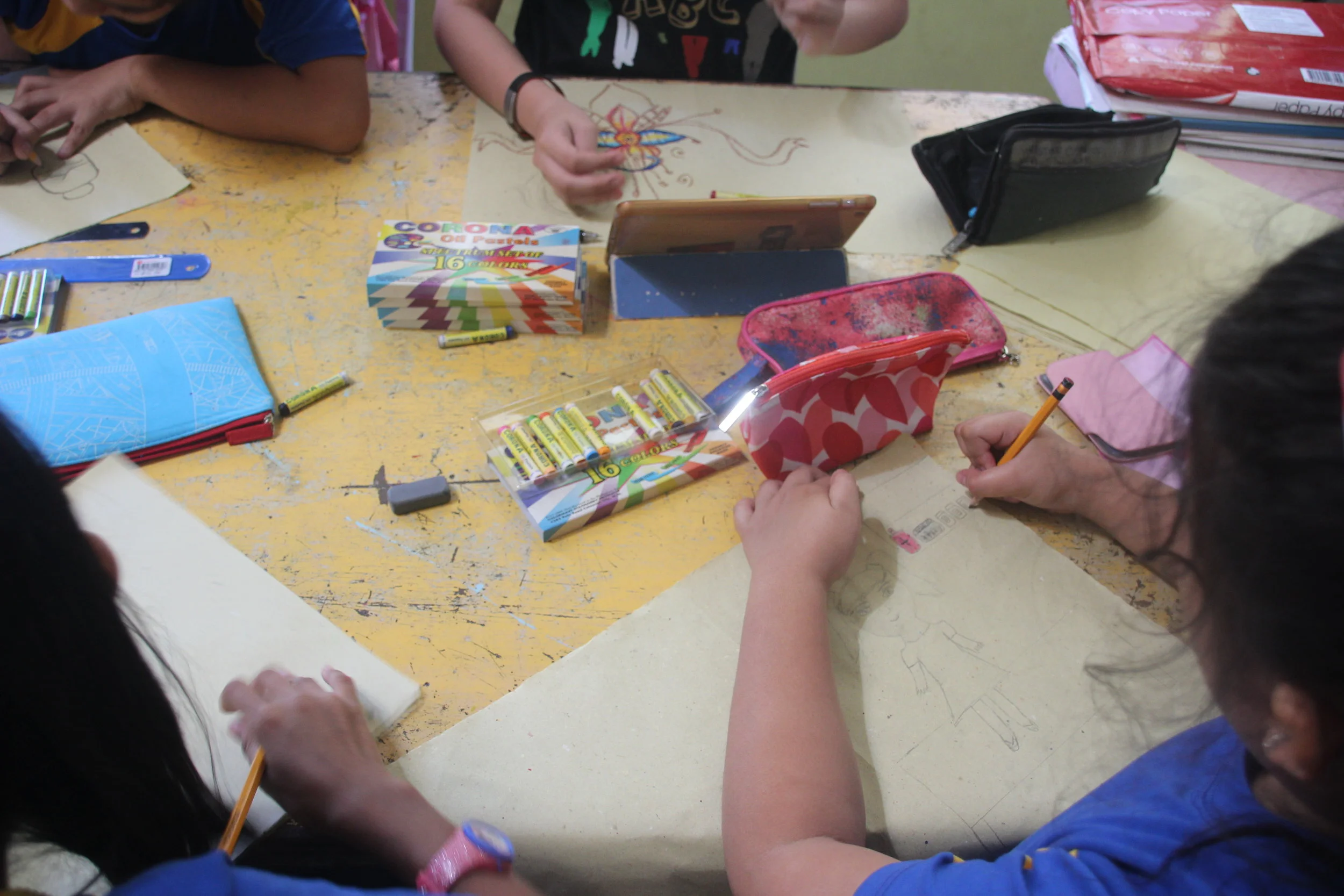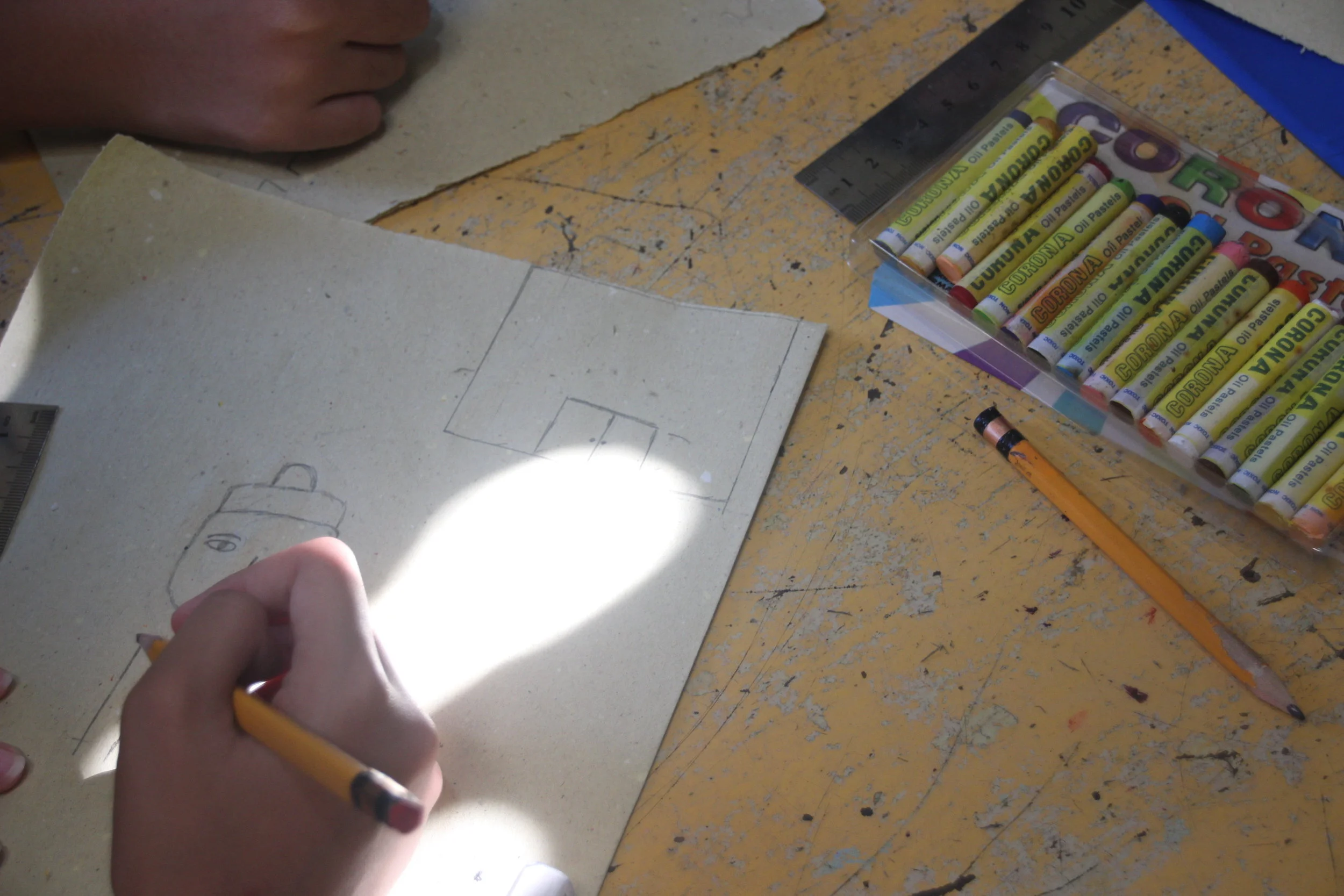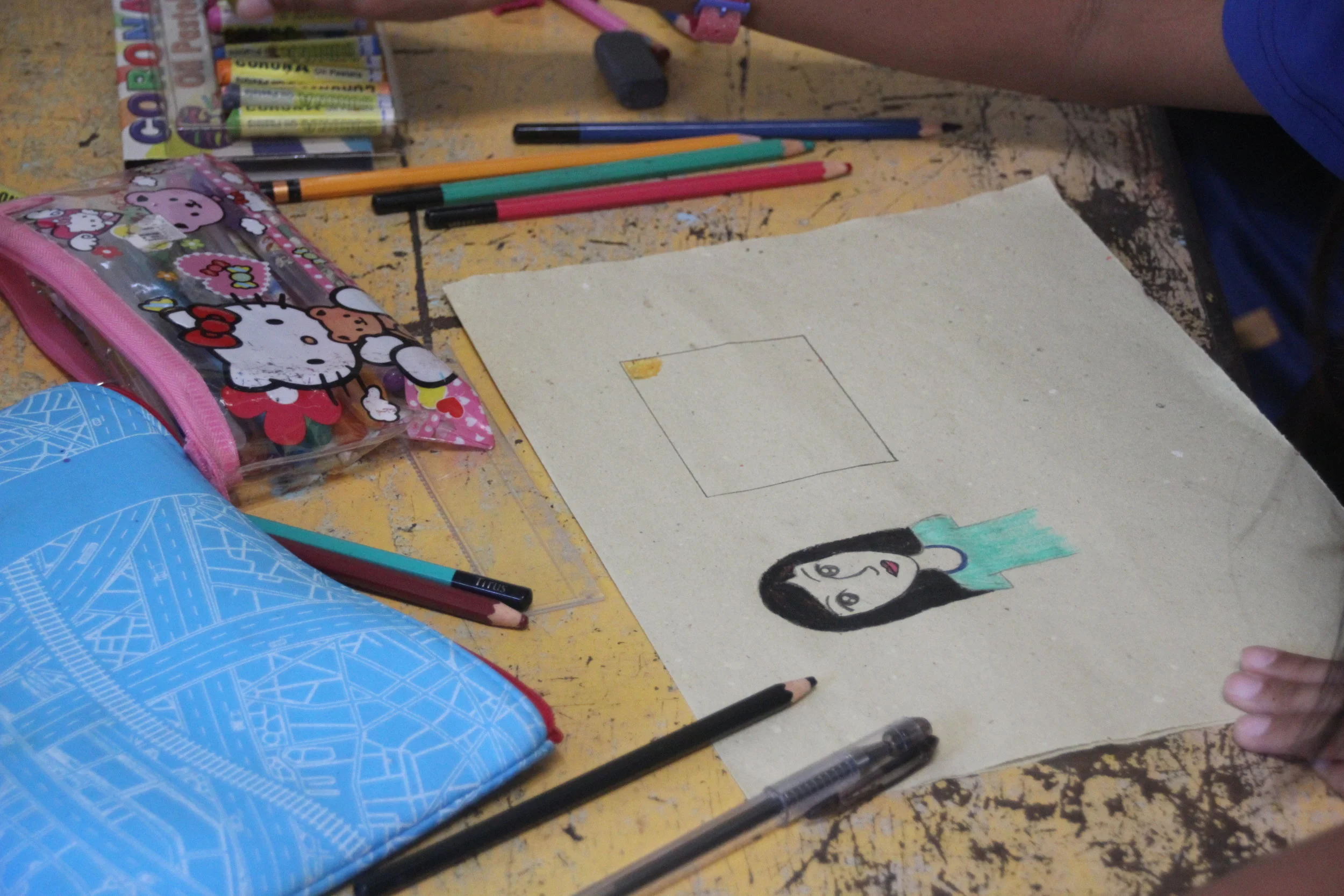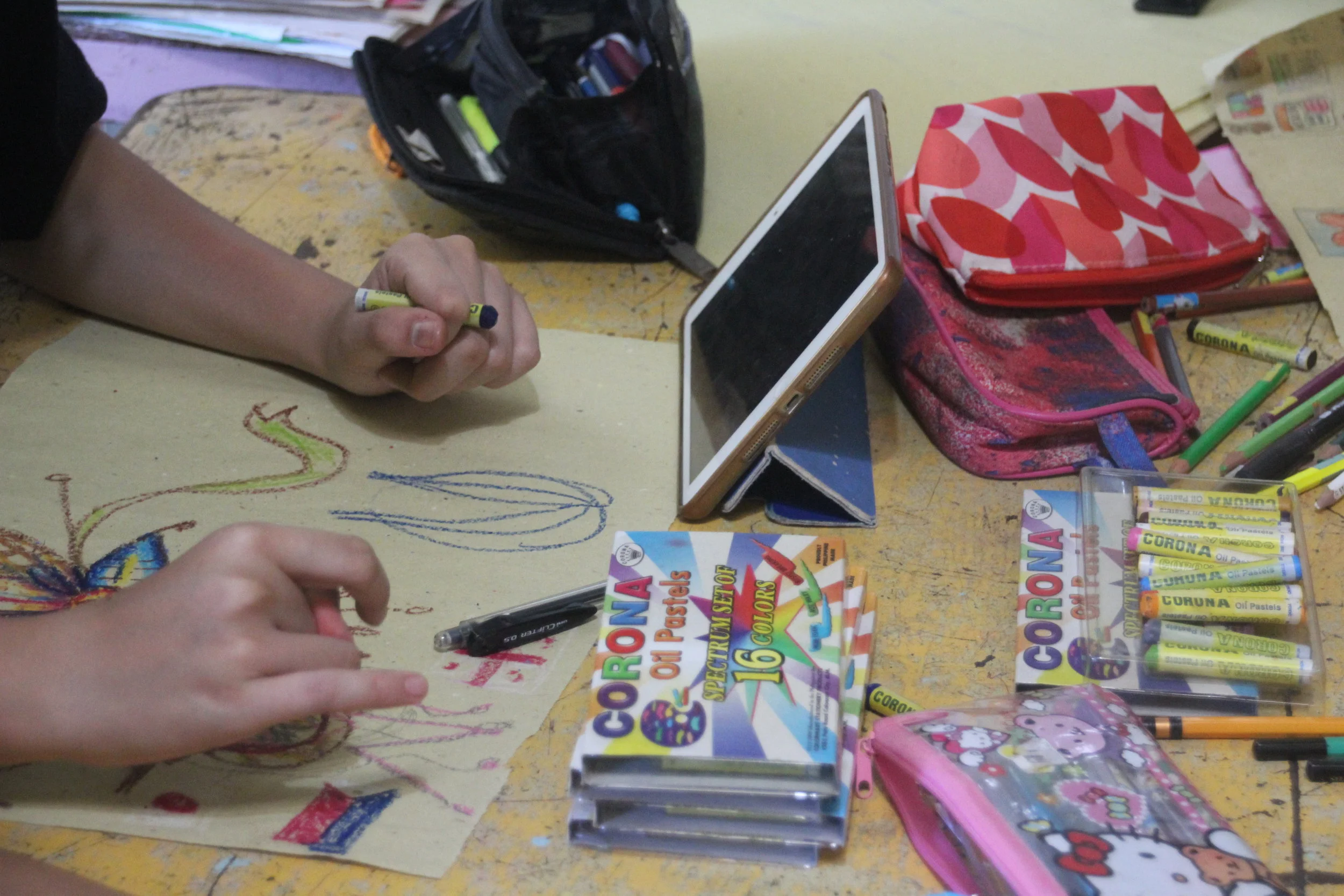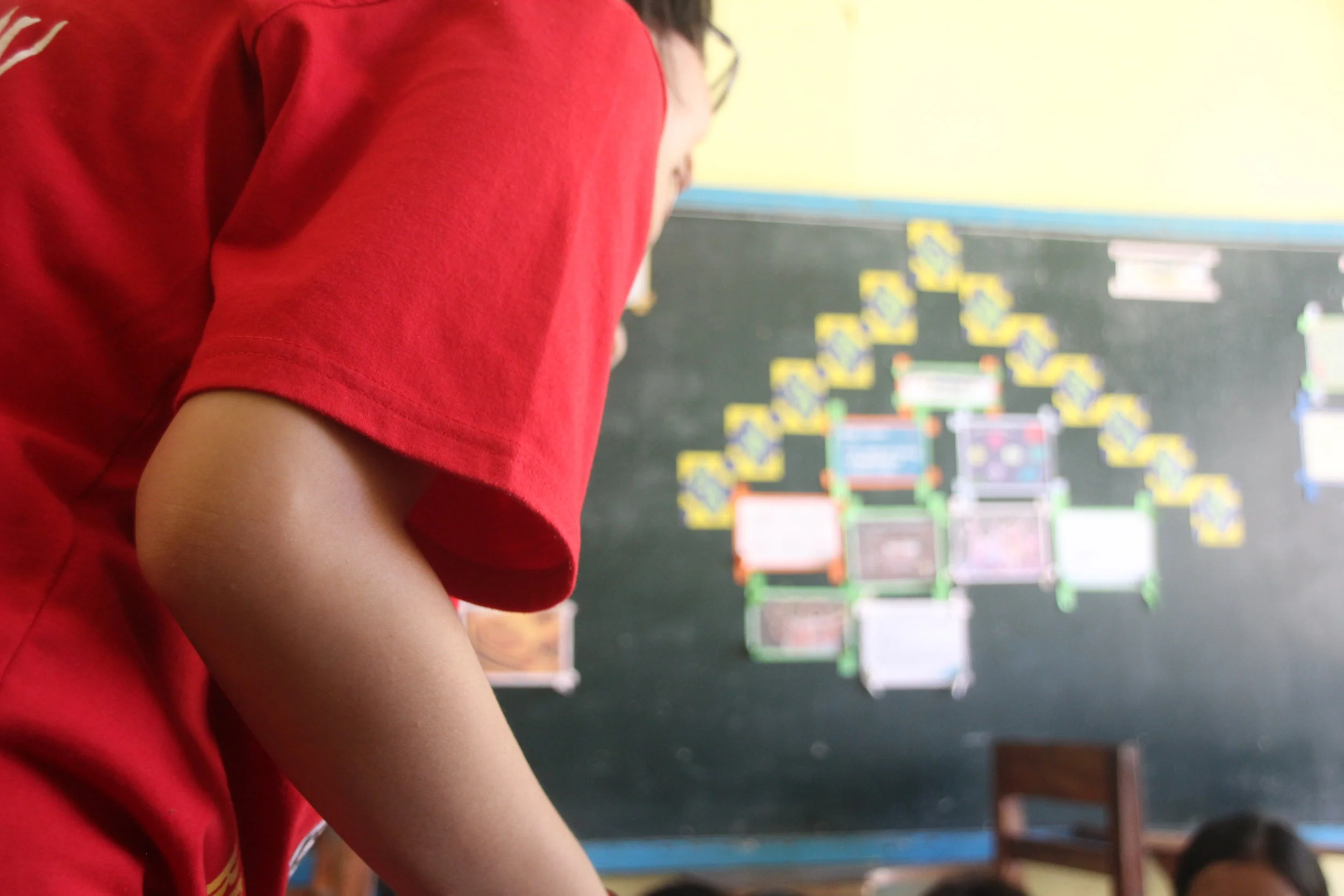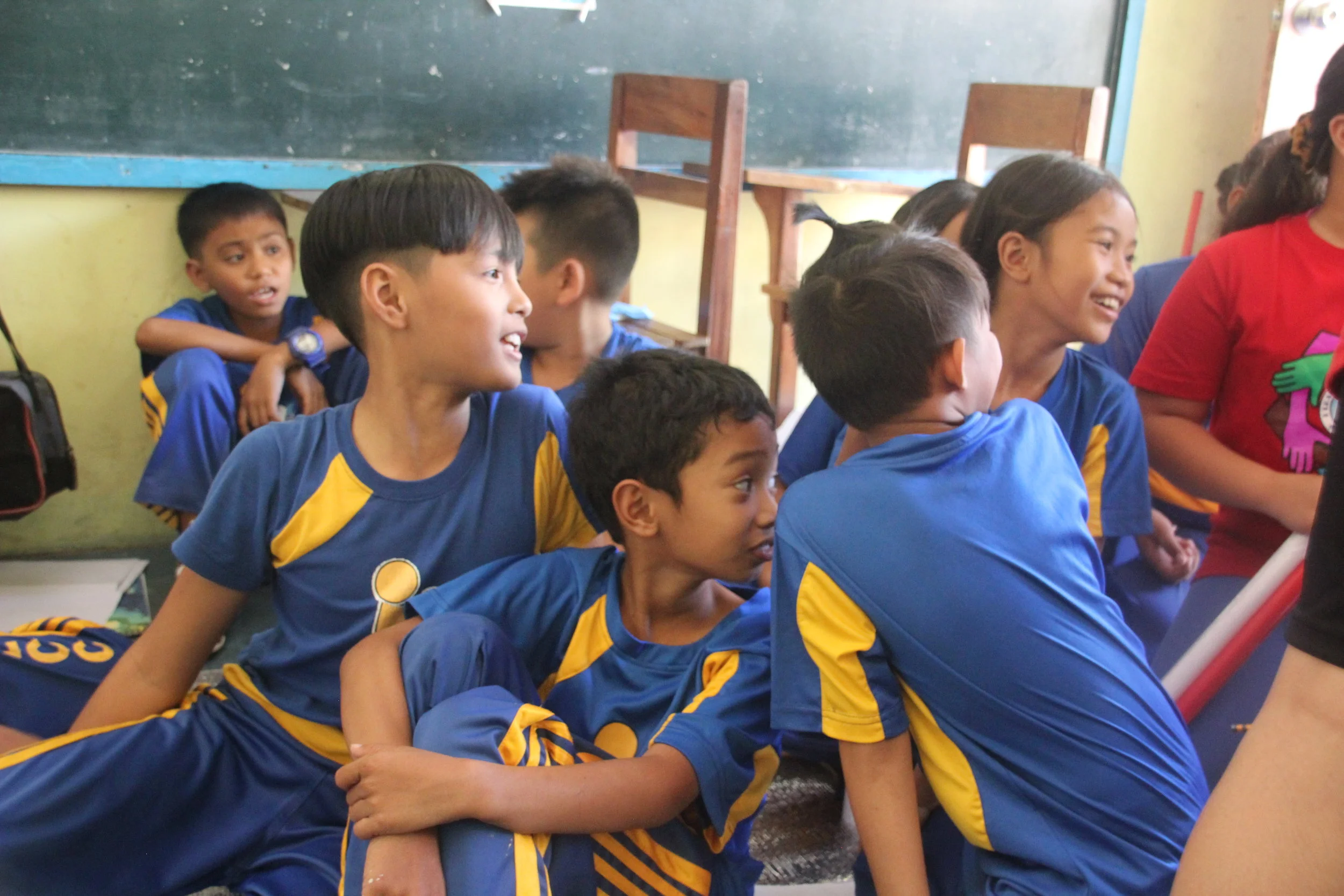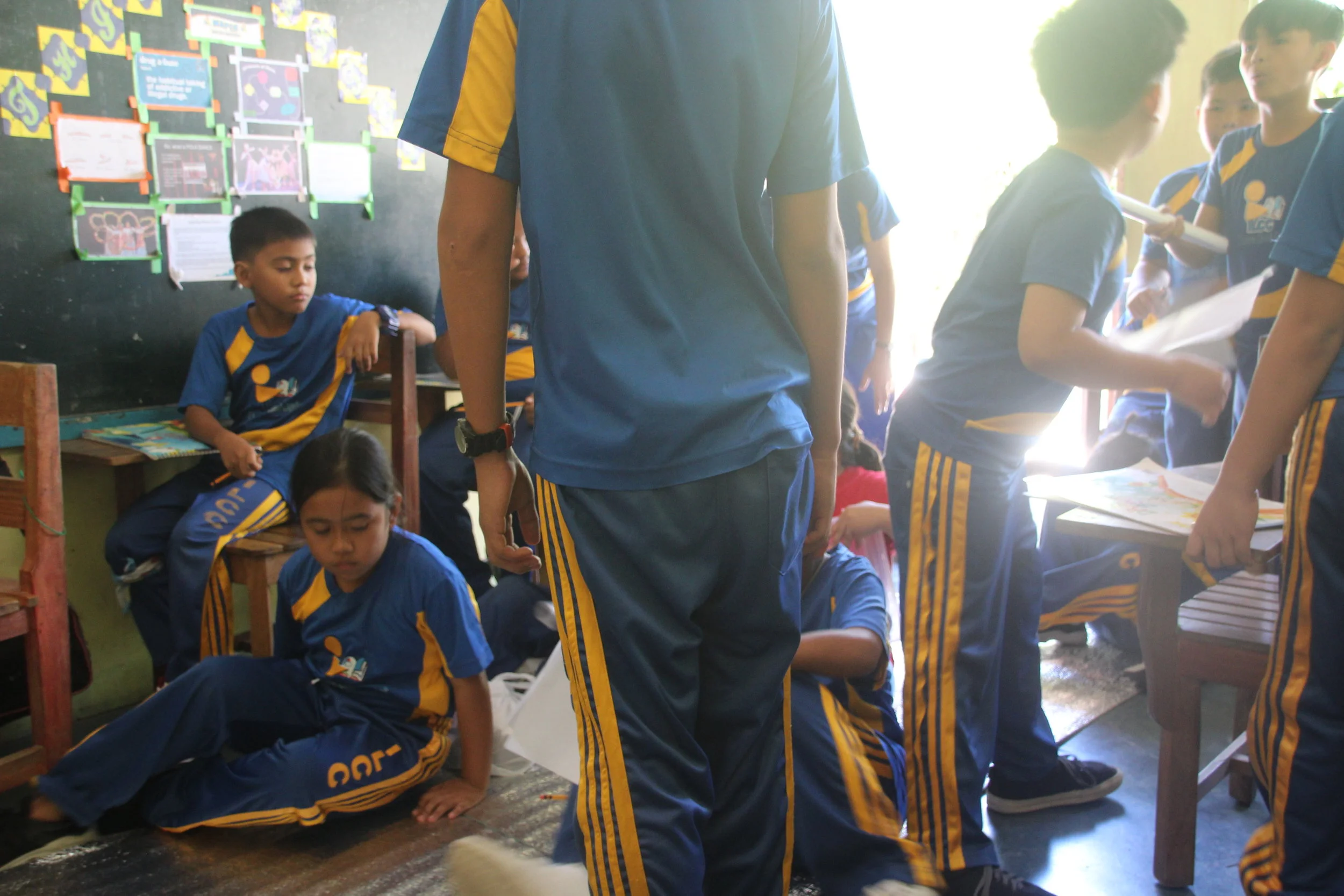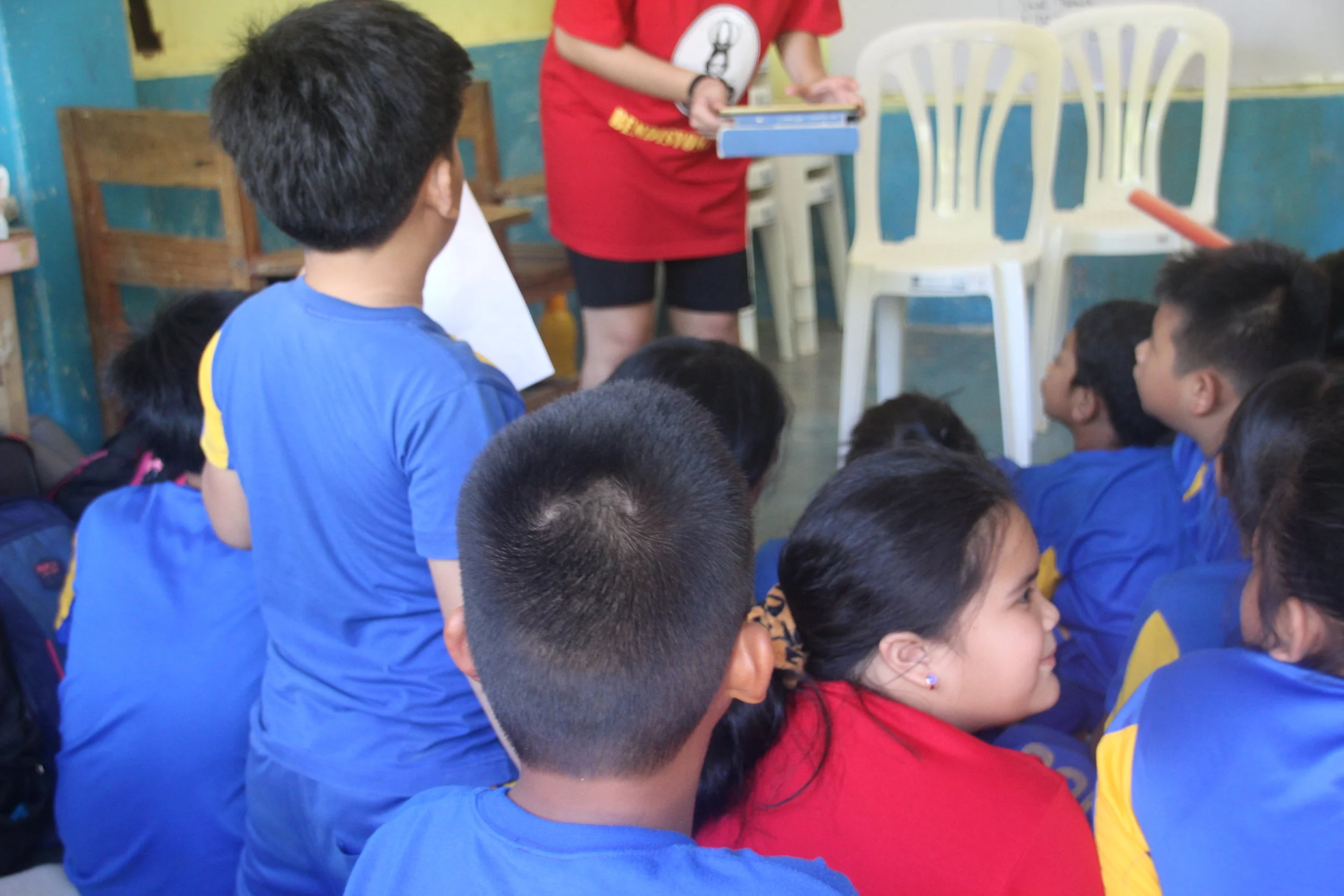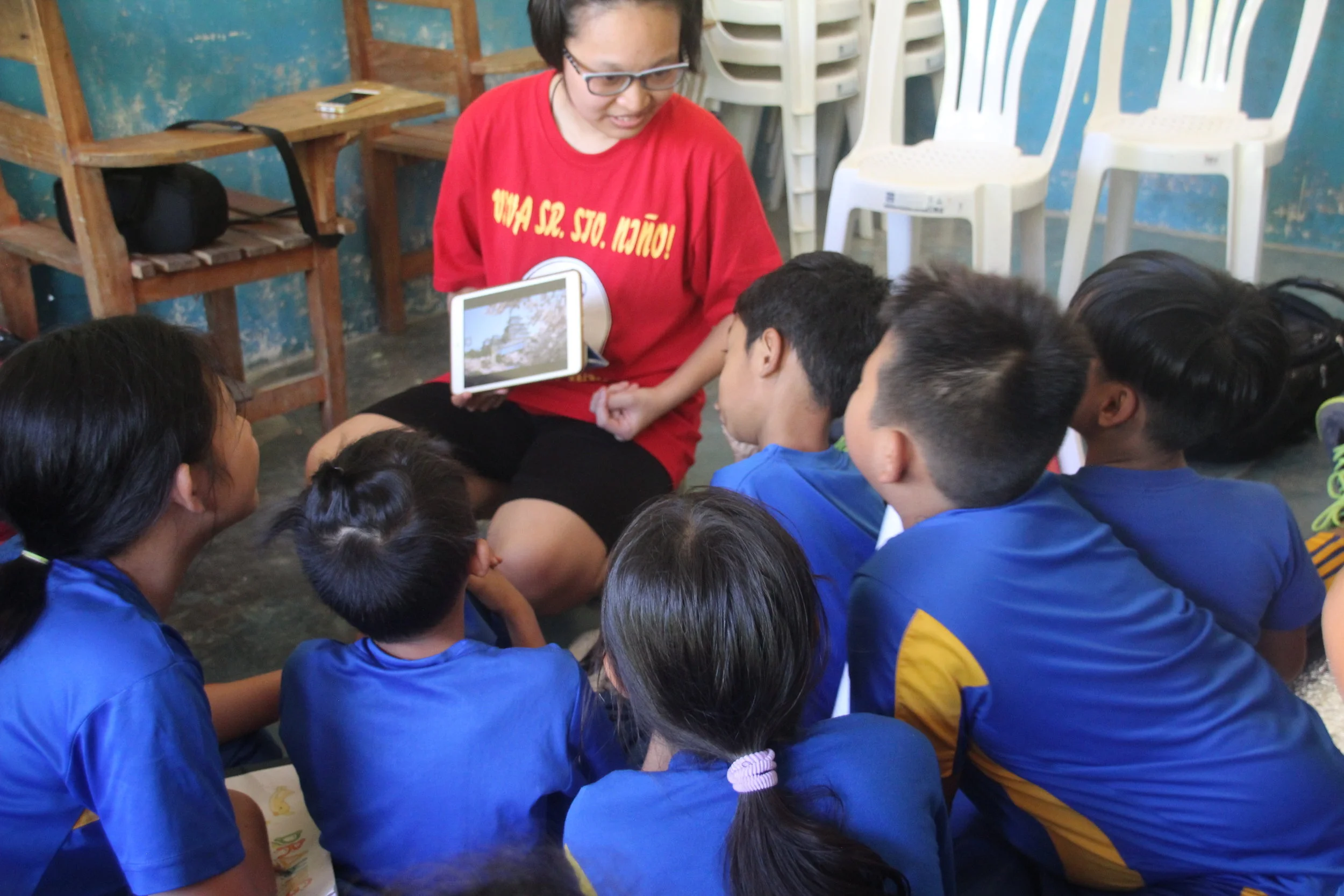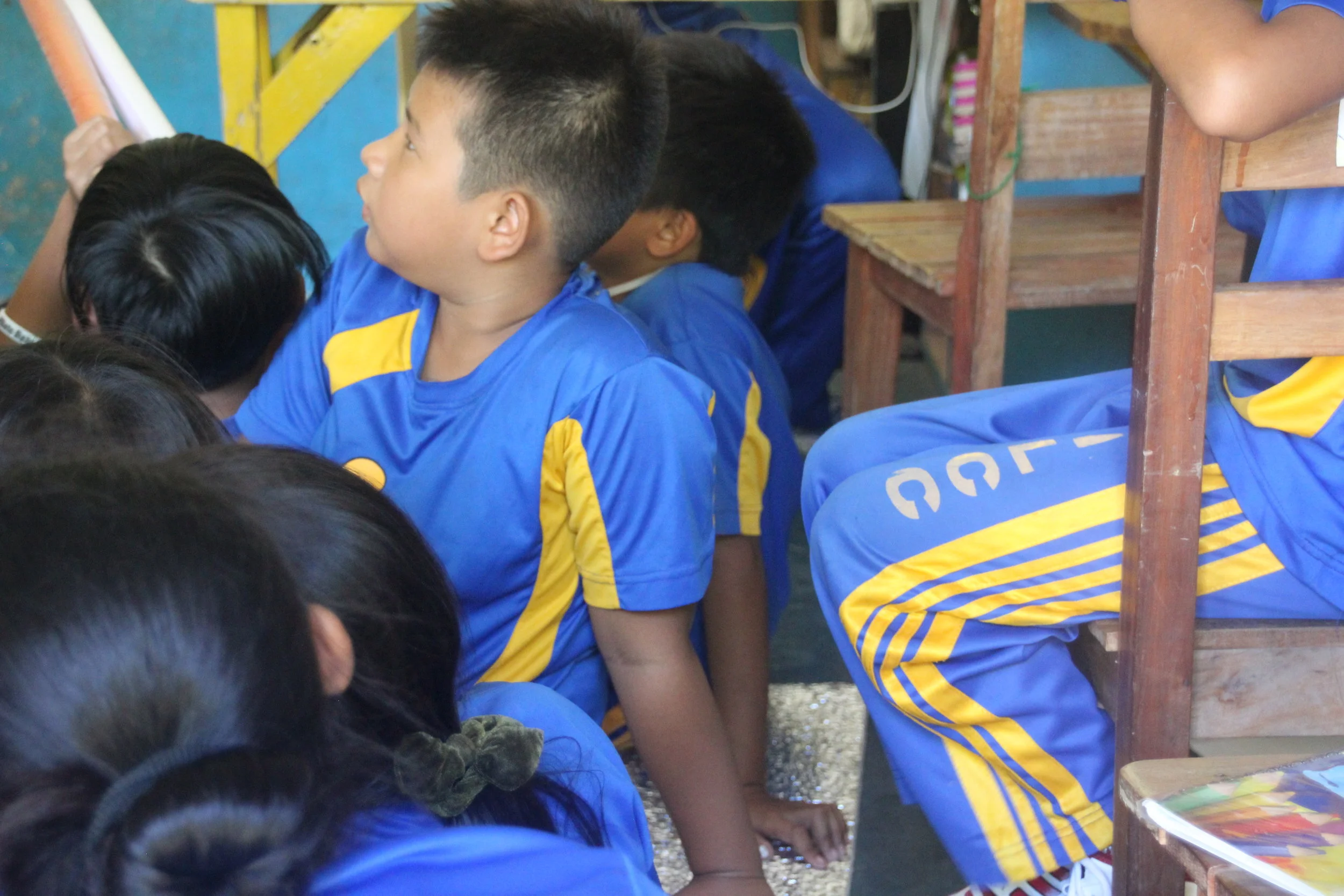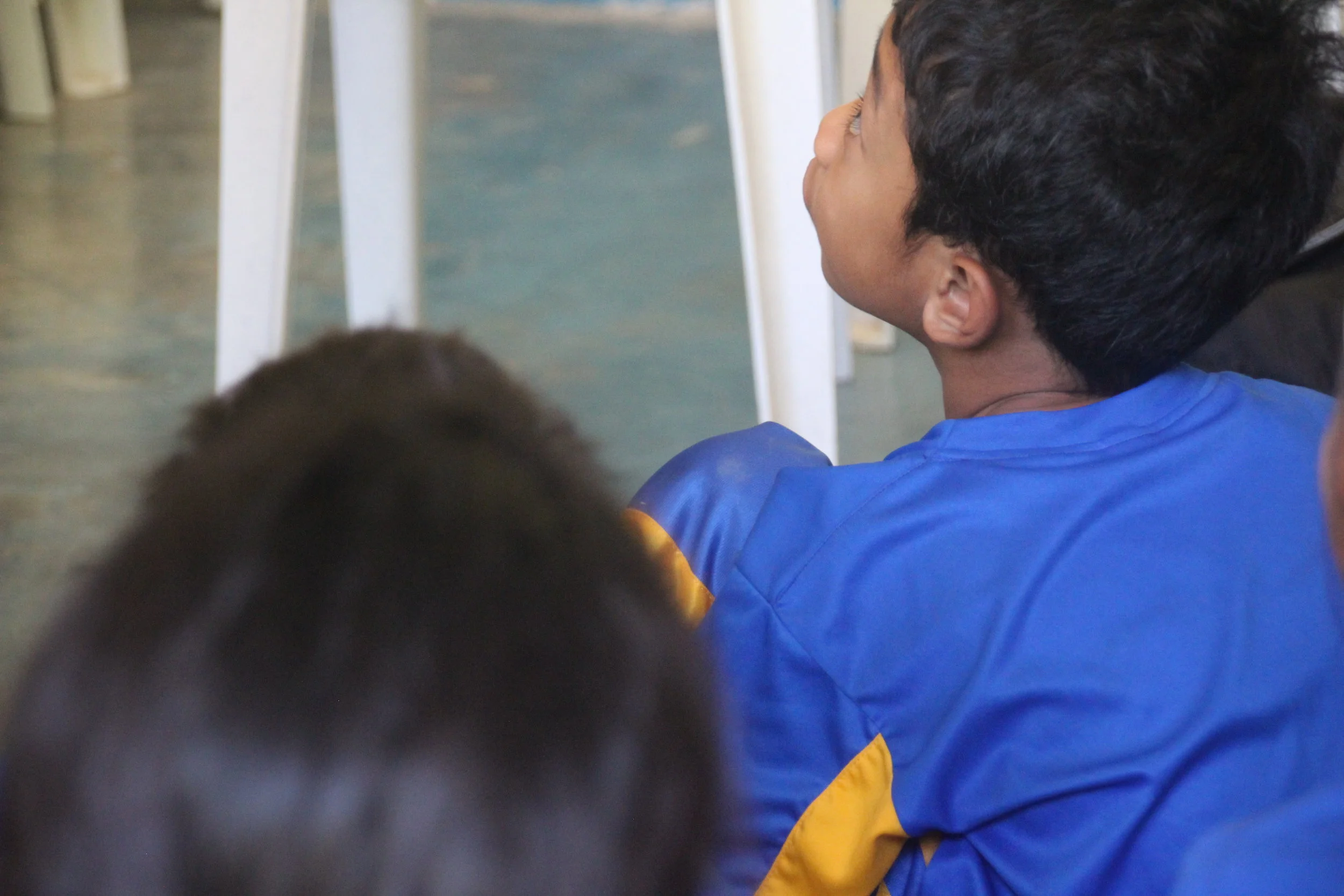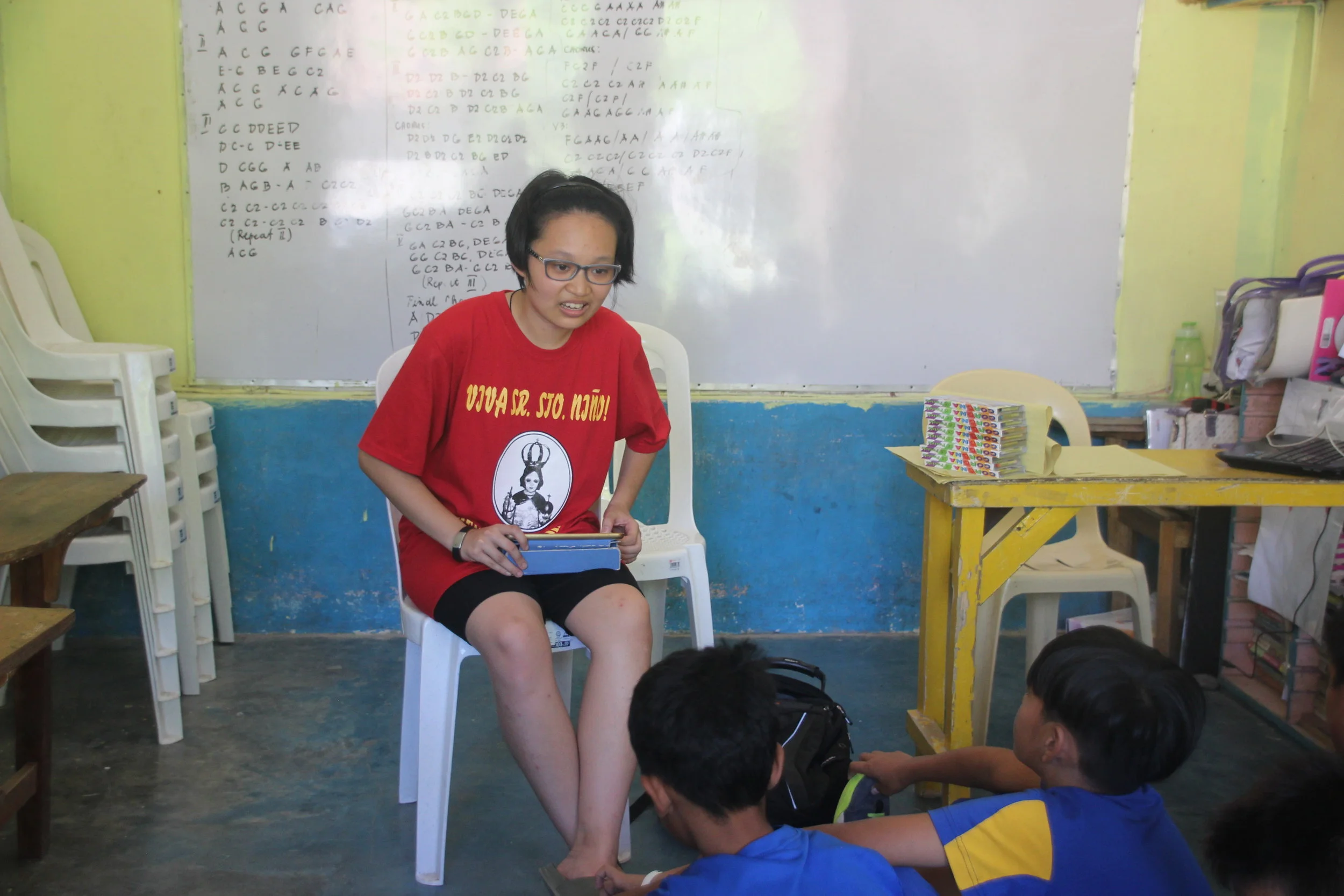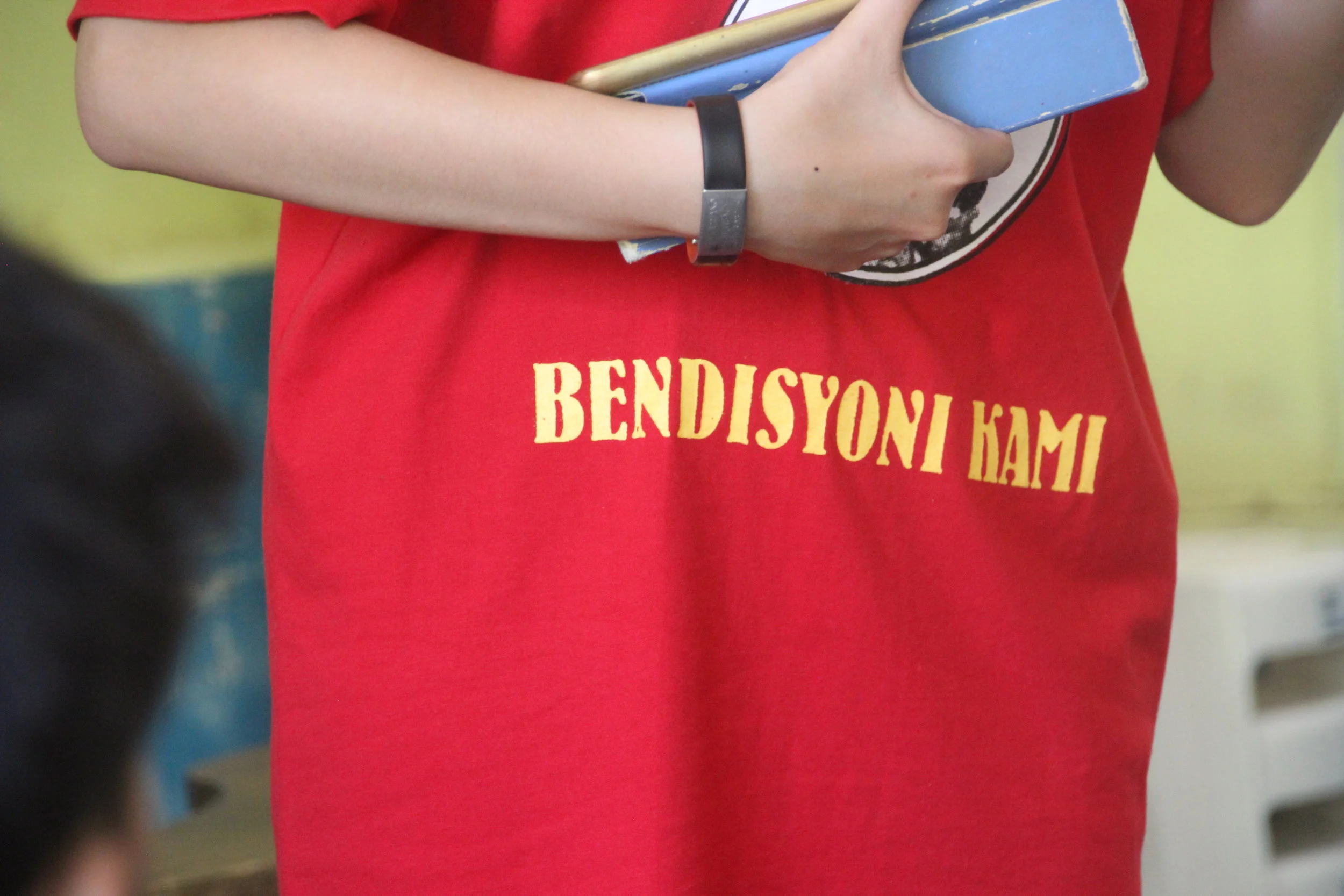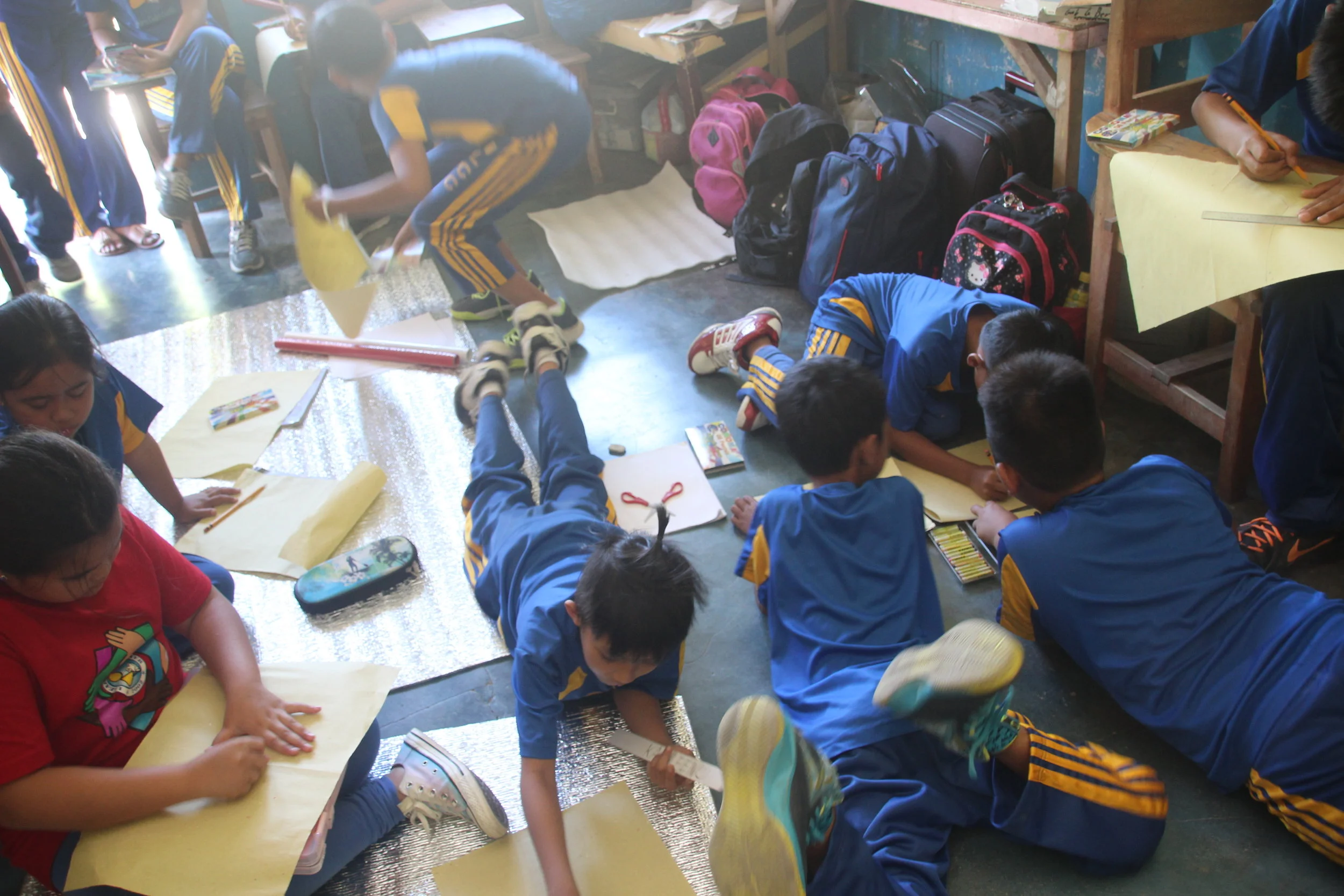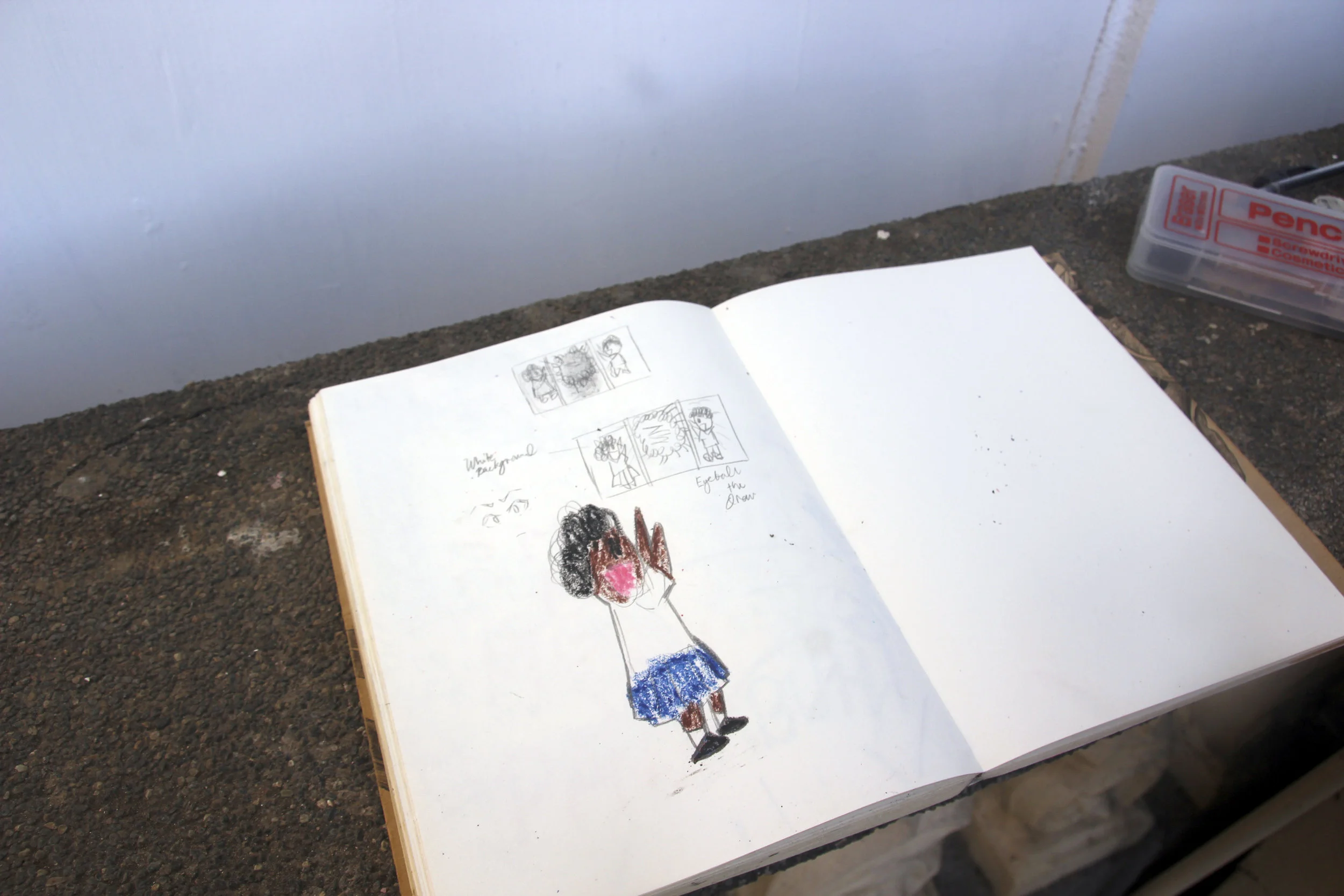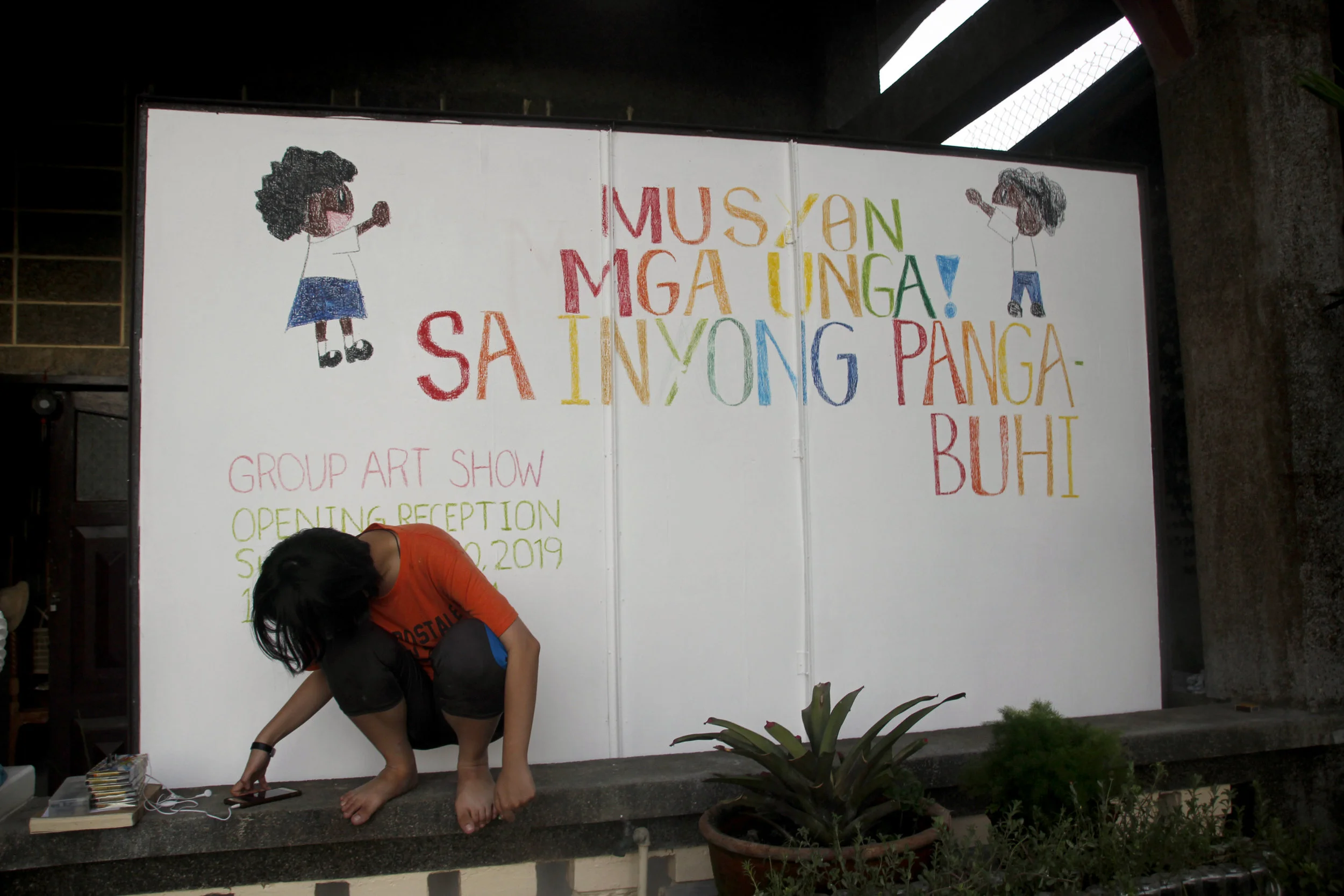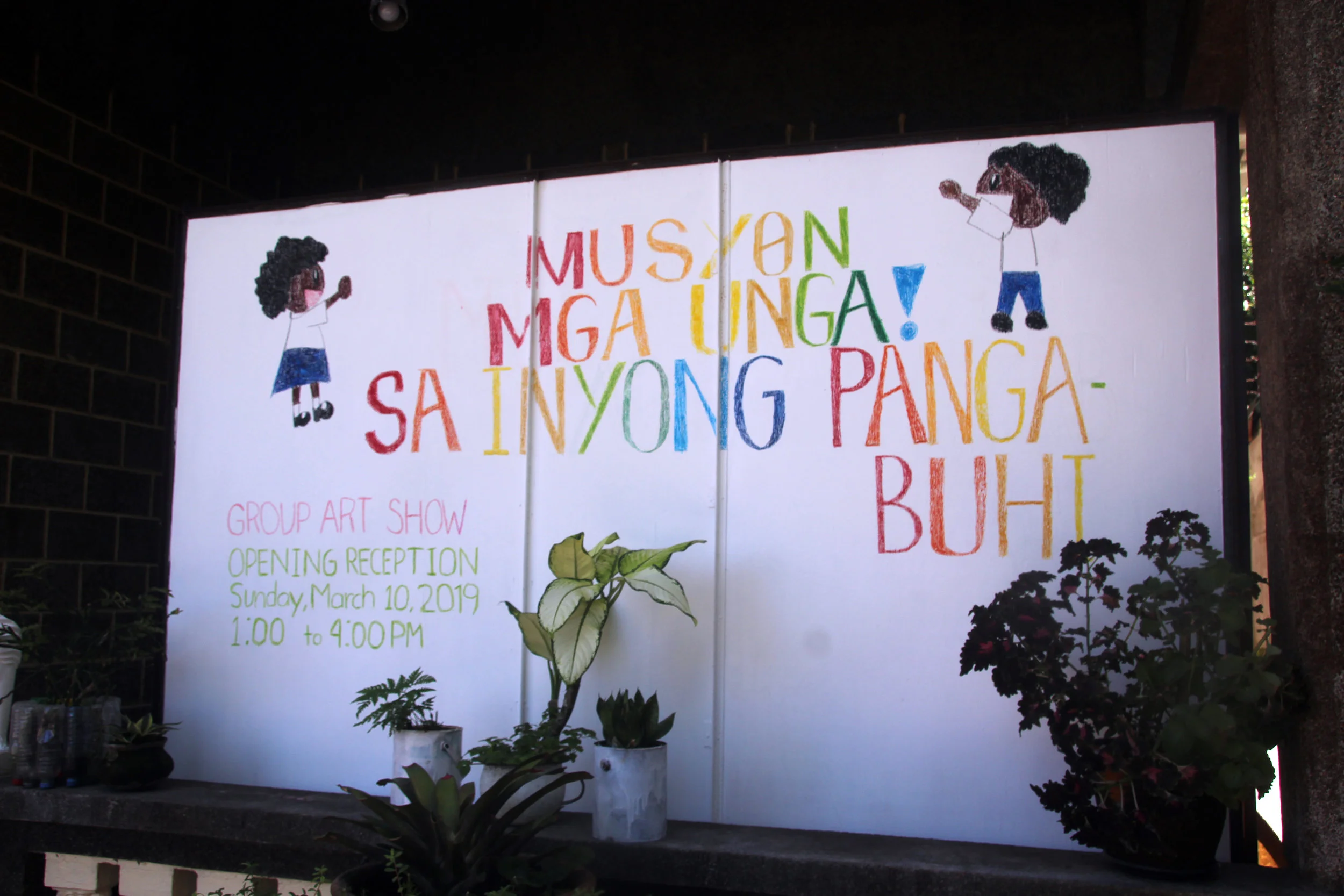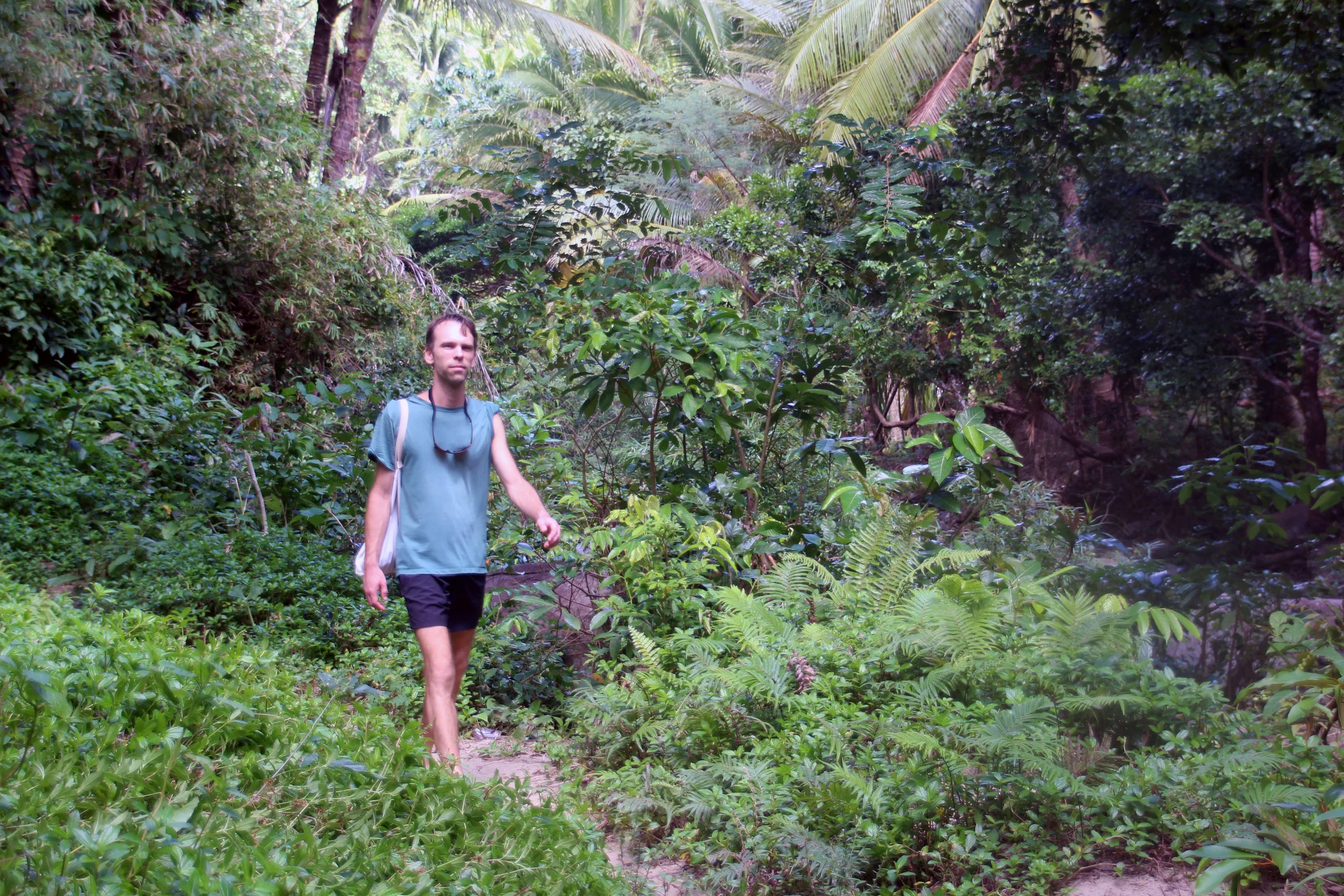Christine Cipriano wonders about the future
Visual Artist
Kalibo, Aklan
March 2019
Sometimes a slight shift in the environment is enough to change perspective. Such was the case for Christine Cipriano, a Kalibo based artist who completed her residency at Elmo's House in March. Kalibo, a bustling town a mere hour away from Batan meant Christine was not far from her backyard. Accustomed to the local politics, customs, culture, climate, etc., Christine did not have to make the kind of calibrations artists from elsewhere had to make.
The focus then was a kind of reengagement. The residency gave space for pondering and observation to a refreshing degree.
Christine Cipriano is a recent graduate of Saint Scholastica's College in Manila with a Bachelor of Fine Arts. As a strategy to decompress and restore autonomy from years of post-secondary education, Christine was set to spend her residency developing her studio practice outside a formal setting.
Weekly excursions by boat and land introduced Christine to the natural beauty of the area and in her words, a 'renewed appreciation for her Filipino heritage.’ When the days were quiet, Christine poured over books and papers about the unique phenomenon of Filipino migration or diaspora. This research was done in concert with art classes Christine lead at I Learn Child Centre in Batan, Aklan. Working with grade-school children, Christine sought to understand how the diaspora influenced children's' dreams for their future. Through the exercise of visualizing their grown-up selves, the children drew what could be.
The classes ranged from grade 2 to grade 6 levels, each week and for about 3-4 hours at a time. Each day began with a presentation of different countries with large Filipino-immigrant or OFW (Overseas Filipino Worker) communities and brainstorming various career paths. Majority of the children contributed to the discussion, bringing their experience, as they know at least one relative, friend or neighbour living and working outside the Philippines. One child even lived in UAE (United Arab Emirates) for a time.
Christine Cipriano's residency finished with an exhibition at Paniki Gallery titled Musyon mag Unga! Sa Inyong Pangabuhi (Come Children! To your Career), featuring the works completed from the art classes. Drawn on Manila paper, and arranged by country and occupation, the children's' works reveal much of them want to stay in the Philippines, working in tertiary industries such as education and medicine. There were outliers like gym owners, artists, pilots and one adorable superhero. Earnest and truthful, the artworks are compelling evidence of the myriad ways diaspora affects precocious minds.
The academic readings that formed the basis of Christine's research were, in many ways, eclipsed by the truthfulness of the children's drawings. Absorbing the things seen on TV, the desire and reverence of imported goods, the assimilation of western ideals in education, the alluring examples of financial success of overseas workers, have all affected the dreams of our future makers.
What then will come of all this? Can we anticipate the future of our ever-evolving geography?
Can you give a list of readings you completed during your residency?
What were you hoping for when working with the children from I Learn? What did you learn, and what would you have done differently?
I come from a family of educators, and so I was keen to meet the teachers in I Learn and observe them at work. Educators are such an integral part of shaping children's futures; educating as a sort of mission. I was hoping to glean some wisdom from the teachers and learn different strategies of teaching in the classroom.
However, one thing that took me by surprise was the shortage of teachers. During the month I spent in Batan, I witnessed several teachers resign from their post to pursue opportunities in larger towns and cities. Unfortunately, career opportunities in Batan cannot compete with those available in more cosmopolitan centers. I'm saddened by this, as it will create a ripple effect with lasting results. Another consequence of Batan's resource deficit is the advanced state of resourcefulness teachers, and administrators have come to adopt.
Majority of the institution’s equipment is either borrowed or donated. Some of the given books are in tatters, and many donated goods are modified for a new purpose. I noticed how the staff repurposed truck tires into decorative garden pieces. I Learn frequently participate in science invention competitions all over Panay, with a focus on repurposed materials. Most recently they entered a homemade vacuum cleaner using 1L bottle of Coke and other everyday objects. I Learn took home several awards.
A lot of the students’ parents are expats, usually working as domestic helpers and skilled labourers. The children and I discussed the challenges of working abroad, overcoming many financial and cultural barriers. I listened to the students describe their dreams for the future and encouraged them to translate them through artistic expression. The children's relatives gave me a positive reception, and some even encouraged me to speak English during lessons. I enjoyed teaching more than I anticipated; giving me the boost to try teaching nonverbal students using art as the primary medium.
Though you were not far from home, were there elements of Batan you found different?
I enjoyed walking around the town carefree. On one morning specifically, I noticed the water reflected the sun’s colours nicely. In Kalibo, many folks are wary of each other because of the town’s modernization. Batan culture is all about ganging up together for the community. I wish the small town charm will be retained over time.
What was your most important revelation or rediscovery during your residency?
Through my time at I Learn, as well as during exhibition reception, I discovered how simple actions could convey messages that affect societal beliefs, whether it’s an ideology or a fallacy. It can be on a moral standpoint or an economic one. Ever-evolving technologies continue to blur geographical boundaries making the exchange of ideas and viewpoints easier.
What are you doing currently?
I’m currently taking AB History as my second course.
Derived from the Greek term diasperien, from dia-, "across" and –sperien, "to sow or scatter seeds," diaspora groups have been historically referred to as displaced communities of people, dislocated from their native homeland through the movement of migration, immigration, or exile (Braziel & Mannur, 2003, 1). More recently, Fiona Adamson and Madeleine Demetriou (2007, 492) view the concept of 'diaspora' as being "employed across a variety of disciplines in the social sciences as a means of studying the relationship between territorially defined forms of political organization and control, and the articulation and mobilization of political identifications." As such, diaspora are commonly defined as migrants who maintain a strong attachment to their homeland (Cohen, 1996)—often existing as a social collectivity that spans across state borders (Adamson & Demetriou, 2007, 497). Additionally, Robin Cohen (1996, 515) identifies common features of diaspora, including: a collective memory and myth about the homeland, including its location, history and achievements; a sense of empathy and solidarity with co-ethnic members in other countries of settlement; an idealization of the putative ancestral home and a collective commitment to its maintenance, restoration, safely and prosperity even to its creation; the development of a return movement; a strong ethnic group consciousness sustained over a long time and based on a sense of distinctiveness; and a common history and the belief in a common fate.
Vander Meulen, Jocelyn. Citizenship and Diaspora Engagement: The Case of the Philippines. School of Political Studies Faculty of Social Sciences University of Ottawa, pp10, 2016. uOttowa, https://ruor.uottawa.ca/handle/10393/34538
To learn more about the exhibition Musyon mag Unga! Sa Inyong Pangabuhi, please visit:


